‘Agents of SHIELD’ Series Finale: Creators Explain Fitz’s Season-Long Absence
“We knew we were gonna have a challenge with building a story for Fitz this season,” co-showrunner Jed Whedon told TheWrap

(WARNING: The following story contains MAJOR spoilers for the two-part series finale of ABC’s “Agents of SHIELD” on Wednesday.)
It may have taken until midway through the show’s series finale, but Fitz finally showed up in “Agents of SHIELD’s” final season and put an end to the season-long mystery of just where the other half of FitzSimmons while the rest of the team was hopping through time.
“We knew we were gonna have a challenge with building a story for Fitz this season,” co-showrunner Jed Whedon told TheWrap. Because of scheduling conflicts, Iain De Caestecker had very limited availability for the final season, which led the Marvel TV series to work in a story that saw Fitz stay behind, in an unknown location, while the SHIELD team was trying to prevent the Chronicoms from messing up the timeline (spoiler: they were not very successful).
But since “Agents of SHIELD” exists in the same Marvel Cinematic Universe as Iron Man, Captain America and the rest of the Avengers, the show found a creative way to both explain Fitz’s absence while at the same time, not upend the last 12 years of continuity. The timeline viewers saw Coulson, Daisy and company travel through (with a very still much alive Daniel Sousa) all season was a different reality than the one MCU fans have been watching for years. In layman’s terms: all the changes to the timeline, from Project Insight being some 30 years ahead of schedule, to John Garrett getting superpowers, created a branch reality.
If that feels familiar, it’s because it’s exactly how the MCU rules of time travel were explained by the Hulk (Mark Ruffalo) in “Avengers: Endgame.” Changing the past doesn’t change your former present, it only creates a new reality.
“When we first started talking about it, it was before ‘Endgame’ had been released,” Whedon explained. “We knew that there were certain things we could not do… It’s one universe and we tried to be true to it.” He added they didn’t want it to seem like they were doing the same story as “Endgame,” which centered on the Avengers try to un-do a present-day calamity.
“We didn’t want to play the same game that they were going to play,” he added.
Meanwhile, Fitz stayed behind in the “prime” universe, knowing he would eventually use the Quantum Realm to travel to this new reality at a very specific point, so he could take them back to their universe and save the day from the attacking Chronicoms (which basically saw everyone travel back to the Season 6 finale). The finale revealed that he and Simmons (Elizabeth Henstridge) had figured out how to beat the Chronicoms, even if it took them years (and one kid) to study the timestream and figure out how to get to the one future where they win (it involved Kora, Daisy’s sister who is long dead in the “prime” universe).
But part of the plan meant keeping the team, including Simmons, in the dark about the full scheme. That allowed for yet another tearful reunion between the two star-crossed lovers, who finally get their happy ending. “We put enough obstacles in their way,” Whedon said. Added Co-showrunner Maurissa Tancharoen: “They deserved their happy ending.”
The show fast-forwarded one year later to show how the team had all gone their separate ways, even if many of them remained with SHIELD (Mac sports a very Nick Fury-esque trench coat). The creators said they wanted the finale to mirror the feelings the people working on the show were going through. “Find a way where everyone’s still gets their own little happy ending, but separate,” executive producer Jeffrey Bell said.
Though they didn’t expect the fact that last scene saw everyone reunite virtually (though in this case via holograms) would hit a little too close to home, given the current state of the world amid the coronavirus pandemic. “We had no idea that we would be predicting what is actually our predicament as people right now,” Tancharoen said.

Leave a Reply Cancel reply
Your email address will not be published. Required fields are marked *
This site uses Akismet to reduce spam. Learn how your comment data is processed .
The Time Travel In Agents Of S.H.I.E.L.D. Season 7 Explained
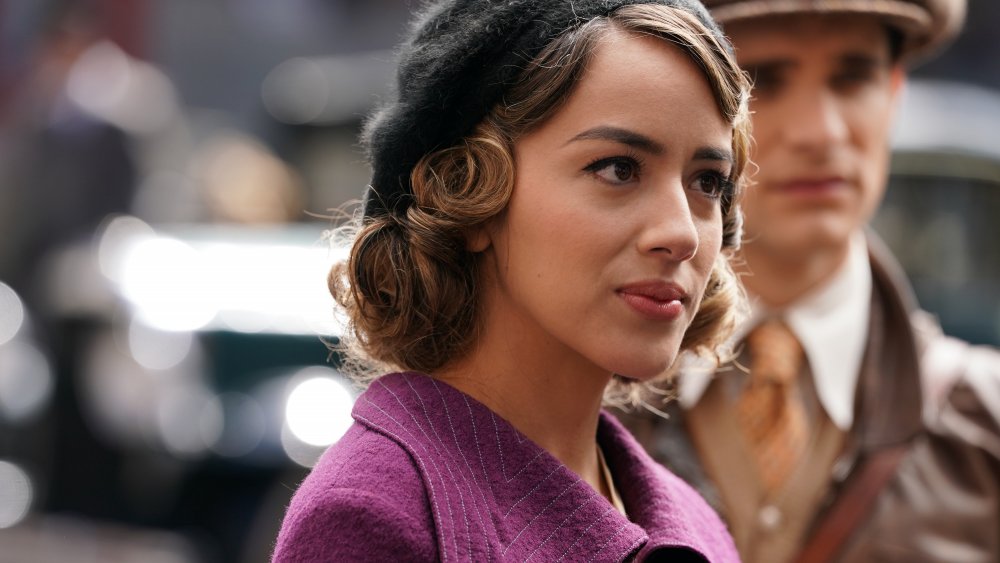
In the final season of Agents of S.H.I.E.L.D. , the team is doing their own kind of time heist, but they don't have the benefit of Pym particles like the Avengers did in Avengers: Endgame . The way time travel works on Agents of S.H.I.E.L.D. is a little different — though, at some point, Bruce Banner ( Mark Ruffalo ) should probably debrief and compare notes with Leo Fitz (Iain De Caestecker) and Jemma Simmons (Elizabeth Henstridge).
The time travel itself is necessary to stop an enemy from outer space. The Chronicoms, who want to establish a new home on Earth and, believing that the desk organization behind its mightiest heroes is their only obstacle, are trying to wipe S.H.I.E.L.D. from existence by assassinating the ancestor of Hydra leader Gideon Malick. So, ironically, in order to save S.H.I.E.L.D., our team has to save Hydra, since the organizations were so closely tied together at the beginning.
In previous seasons, the team traveled in time using portals created by monoliths. Remember, however, that, in season 6, Fitz and Simmons were imprisoned together and forced to solve the logic of time travel. During the season 6 finale, Fitz and Simmons took a sabbatical in time to put all of that into practice and give the Zephyr a major upgrade. Here's how they're time traveling now for the final mission in season 7.
The Zephyr is now a time machine, sort of
Simmons explains in the season 7 premiere that, while Fitz's ship is technically traveling through time thanks to a stolen alien jump drive, they can't just go anywhere. "There are critical launch windows leading to specific points in time and space," she says, "Fitz called them 'tides.' The Chronicom took one and we followed them here." Fitz is the one setting their destination, but can't join Simmons, lest the Chronicoms scan their brains and anticipate their moves, again — because, of course, FitzSimmons has to be separated during the final mission. They're cursed.
It helps that they're using alien technology to accomplish all this. if something doesn't make sense, blame it on the aliens. It's also during that time that FitzSimmons used Chronicom technology to create an advanced Life Model Decoy copy of Phil Coulson (Clark Gregg). He was brought back, so to speak, to consult on S.H.I.E.L.D. history, so the team can figure out the "threads" of time they are trying to unravel.
S.H.I.E.L.D. is not trying to change the past, for now
Aren't they changing history just by being there, and endangering the future of S.H.I.E.L.D., anyway? Deke (Jeff Ward) actually presents a convincing theory about how safe it is to walk around in the past as an alternative to "The Butterfly Effect." "The Butterfly Effect is just one aspect of the multiverse branch theory," he explains. "Personally, I subscribe to to the Time-Stream idea." He then uses sticks in a stream of water as a metaphor. Throw just a few sticks, or factors like people and their actions, into the stream, and the water still ends up flowing to the same destination. The only way to alter time is to create a metaphorical dam. "As long as we can avoid that," says Deke, "we should be able to splash around a little bit."
This is, for the record, on par with how the consequences of time travel are explained in Avengers: Endgame . Hulk insists that, if you travel to the past, then the past you're in becomes your present, and the present you left becomes your past, and therefore can't be changed. That means you can't erase your own existence like in Back To The Future, per Bruce Banner's understanding. Later, Bruce meets the Ancient One, who explains branch realities: You may not change your own past by time traveling, but you are branching off an alternate timeline for everyone else.
On Agents of S.H.I.E.L.D., Deke basically just thinks it takes major actions to branch off these realities, not minor ones. Examples include Loki's theft of the tesseract or Thanos and Gamora's jump forward in time in Endgame . So, branch realities do exist in the Marvel Cinematic Universe but, if all goes according to plan, Agents of S.H.I.E.L.D. won't be creating another one.
Create a free profile to get unlimited access to exclusive videos, sweepstakes, and more!
Agents of S.H.I.E.L.D. creative team finally explains Fitz’s absence for most of the final season
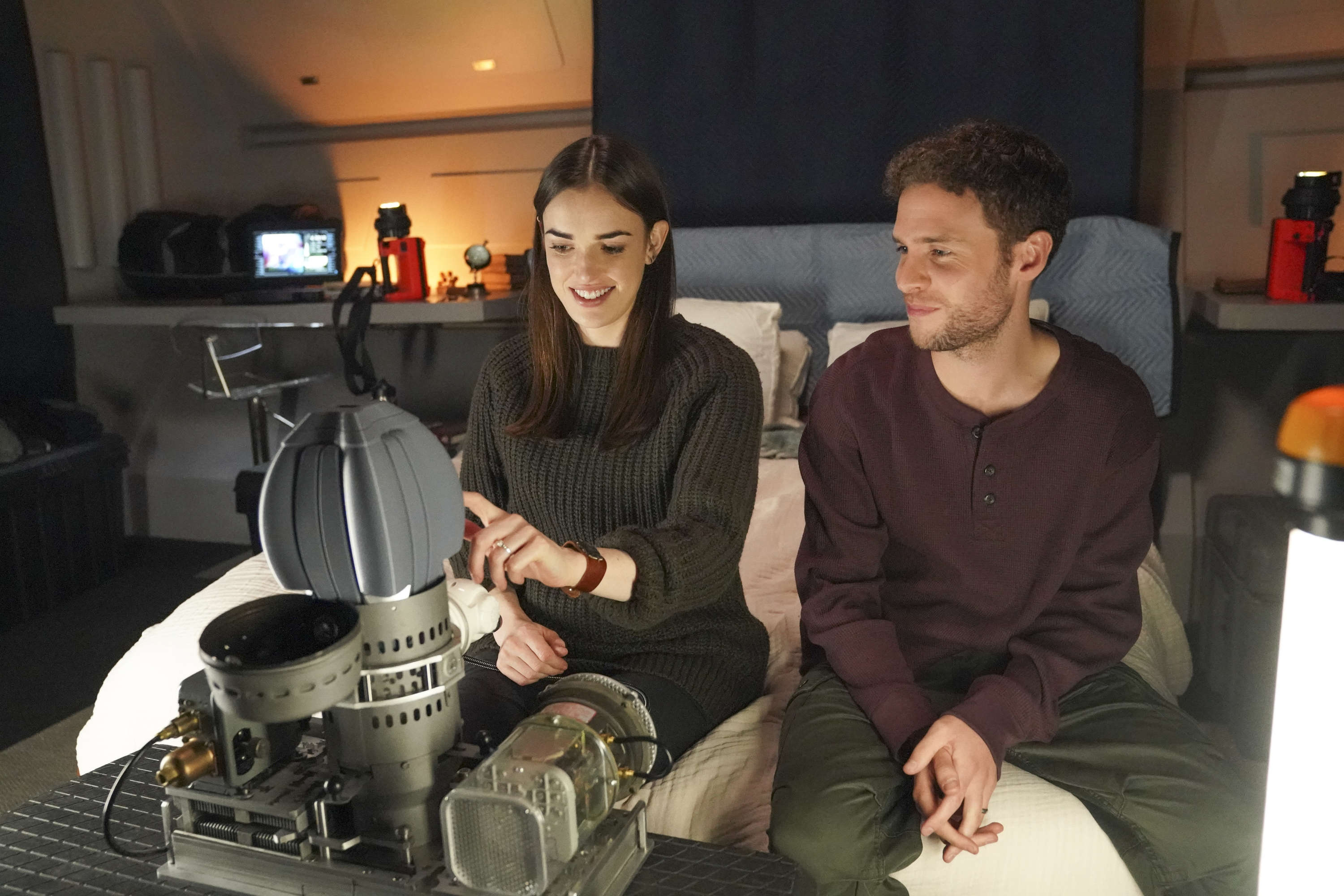
The series finale of ABC’s Agents of S.H.I.E.L.D . is in the books, and most of our burning questions have finally been answered — so what was the deal with Iain De Caestecker’s Fitz being MIA for most of the final season?
In a press roundtable with SYFY WIRE, producers Jed Whedon and Maurissa Tancharoen opened up about why Fitz spent virtually all of the season off-screen, holding down a mysterious post to ground the team back to the “prime” timeline — and even that reveal didn’t come until the final episode. As many suspected, it all came down to real-world scheduling and the show’s shooting schedule. Though they didn’t go deep into specifics, Whedon confirmed it was “scheduling,” and a move they had to get creative to work around with the final storyline.
Tanchareon added that Iain is an “exceptionally talented actor” and indicated everyone is still on good terms. It all simply came down to a scheduling issue that kept Iain unavailable during the brunt of the shoot.
So as fans are well aware, Season 7 turned out to be fairly Fitz-lite, if not entirely by original design. But once it was clear Iain couldn’t be around as much as hoped, Tanchareon said they used it as a way to strengthen the familial bond between Deke (Jeff Ward) and Simmons (Elizabeth Henstridge) this year. It also helped build plenty of anticipation for Fitz’s long-awaited return in the finale.
“So we did what we could and we tried to make it rewarding with the pieces ... Sometimes it's 3D chess. But one of the things that we thought worked is that it brought Simmons and Deke closer together and how to make the reward of him missing so long pay off,” Tanchareon explained. “The only way that we could think is a super happy ending and also that for him, it was this much time and that he actually hadn't missed anything, for him. That was how we answered that in our minds and on the show.”
Time travel did present an interesting creative opportunity to lessen the blow of Iain’s absence, as not much time had passed for him during his time off-screen. We also get flashbacks to the years that Fitz and Simmons had together working on the time machine in space, raising their daughter (surprise!), and eventually finally getting their happy ending in retirement.
The Agents of S.H.I.E.L.D. series finale aired Wednesday night.
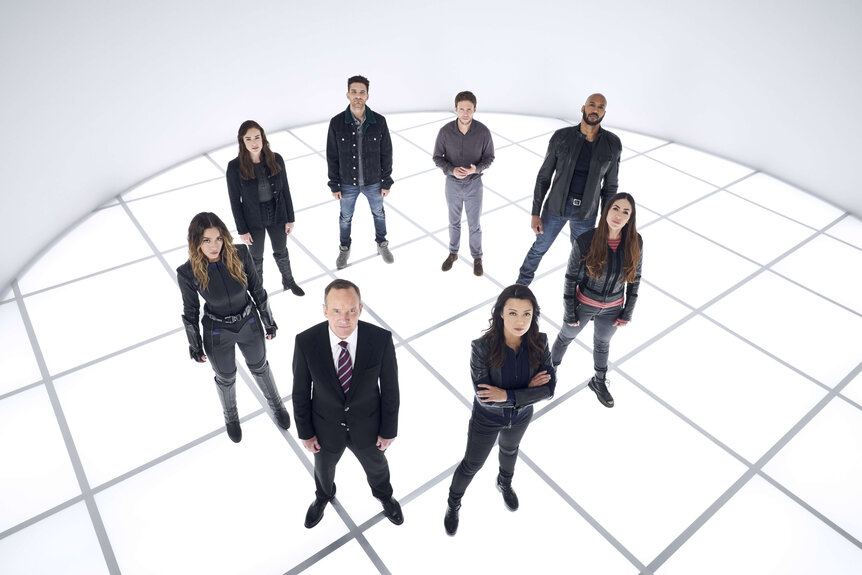
- Marvel's Agents Of S.H.I.E.L.D.
Related Stories

Anthony Mackie On John Doe Vs. Sam Wilson

The Definitive Guide to The Munsters Adaptations

Did Marty Die (Twice?) in Back to the Future?

Were Back to the Future and Goonies Set on the Same Day?

Everything to Know About The Cancelled Miniseries Sequel to The Thing

Nope VFX Supervisor Dishes on Film's Creature Design

How Roland Emmerich Made Up Conspiracy Theory For Moonfall

How Resident Alien Made That George Takei Cameo Happen

Nathan Fillion's Resident Alien Cameo Explained
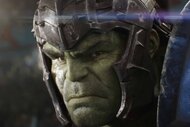
Why We'll Probably Never Get an Incredible Hulk Sequel

Why Are Parts of Oppenheimer in Black and White?

How to Stream Winnie-the-Pooh: Blood and Honey
Recommended for you.

Linda Hamilton on Resident Alien Role: "I'm Not the Funny Girl, I'm the Straight Man"

The Classic Twilight Zone Episode That Inspired Jordan Peele's Us

Resident Alien's Alan Tudyk on Harry's New Love Interest, Edi Patterson's Blue Avian
- Today's news
- Reviews and deals
- Climate change
- 2024 election
- Fall allergies
- Health news
- Mental health
- Sexual health
- Family health
- So mini ways
- Unapologetically
- Buying guides
Entertainment
- How to Watch
- My watchlist
- Stock market
- Biden economy
- Personal finance
- Stocks: most active
- Stocks: gainers
- Stocks: losers
- Trending tickers
- World indices
- US Treasury bonds
- Top mutual funds
- Highest open interest
- Highest implied volatility
- Currency converter
- Basic materials
- Communication services
- Consumer cyclical
- Consumer defensive
- Financial services
- Industrials
- Real estate
- Mutual funds
- Credit cards
- Balance transfer cards
- Cash back cards
- Rewards cards
- Travel cards
- Online checking
- High-yield savings
- Money market
- Home equity loan
- Personal loans
- Student loans
- Options pit
- Fantasy football
- Pro Pick 'Em
- College Pick 'Em
- Fantasy baseball
- Fantasy hockey
- Fantasy basketball
- Download the app
- Daily fantasy
- Scores and schedules
- GameChannel
- World Baseball Classic
- Premier League
- CONCACAF League
- Champions League
- Motorsports
- Horse racing
- Newsletters
New on Yahoo

- CA Privacy Notice
‘Agents of SHIELD’ Series Finale: Creators Explain Fitz’s Season-Long Absence
(WARNING: The following story contains MAJOR spoilers for the two-part series finale of ABC’s “Agents of SHIELD” on Wednesday.)
It may have taken until midway through the show’s series finale, but Fitz finally showed up in “Agents of SHIELD’s” final season and put an end to the season-long mystery of just where the other half of FitzSimmons while the rest of the team was hopping through time.
“We knew we were gonna have a challenge with building a story for Fitz this season,” co-showrunner Jed Whedon told TheWrap. Because of scheduling conflicts, Iain De Caestecker had very limited availability for the final season, which led the Marvel TV series to work in a story that saw Fitz stay behind, in an unknown location, while the SHIELD team was trying to prevent the Chronicoms from messing up the timeline (spoiler: they were not very successful).
But since “Agents of SHIELD” exists in the same Marvel Cinematic Universe as Iron Man, Captain America and the rest of the Avengers, the show found a creative way to both explain Fitz’s absence while at the same time, not upend the last 12 years of continuity. The timeline viewers saw Coulson, Daisy and company travel through (with a very still much alive Daniel Sousa) all season was a different reality than the one MCU fans have been watching for years. In layman’s terms: all the changes to the timeline, from Project Insight being some 30 years ahead of schedule, to John Garrett getting superpowers, created a branch reality.
Also Read: How 'Agents of SHIELD' Survived 7 Seasons as the 'Black Sheep' of the Marvel Cinematic Universe
If that feels familiar, it’s because it’s exactly how the MCU rules of time travel were explained by the Hulk (Mark Ruffalo) in “Avengers: Endgame.” Changing the past doesn’t change your former present, it only creates a new reality.
“When we first started talking about it, it was before ‘Endgame’ had been released,” Whedon explained. “We knew that there were certain things we could not do… It’s one universe and we tried to be true to it.” He added they didn’t want it to seem like they were doing the same story as “Endgame,” which centered on the Avengers try to un-do a present-day calamity.
“We didn’t want to play the same game that they were going to play,” he added.
Meanwhile, Fitz stayed behind in the “prime” universe, knowing he would eventually use the Quantum Realm to travel to this new reality at a very specific point, so he could take them back to their universe and save the day from the attacking Chronicoms (which basically saw everyone travel back to the Season 6 finale). The finale revealed that he and Simmons (Elizabeth Henstridge) had figured out how to beat the Chronicoms, even if it took them years (and one kid) to study the timestream and figure out how to get to the one future where they win (it involved Kora, Daisy’s sister who is long dead in the “prime” universe).
Also Read: 'Agents of SHIELD' Stars on Time-Hopping Through the MCU in Final Season
But part of the plan meant keeping the team, including Simmons, in the dark about the full scheme. That allowed for yet another tearful reunion between the two star-crossed lovers, who finally get their happy ending. “We put enough obstacles in their way,” Whedon said. Added Co-showrunner Maurissa Tancharoen: “They deserved their happy ending.”
The show fast-forwarded one year later to show how the team had all gone their separate ways, even if many of them remained with SHIELD (Mac sports a very Nick Fury-esque trench coat). The creators said they wanted the finale to mirror the feelings the people working on the show were going through. “Find a way where everyone’s still gets their own little happy ending, but separate,” executive producer Jeffrey Bell said.
Though they didn’t expect the fact that last scene saw everyone reunite virtually (though in this case via holograms) would hit a little too close to home, given the current state of the world amid the coronavirus pandemic. “We had no idea that we would be predicting what is actually our predicament as people right now,” Tancharoen said.
Read original story ‘Agents of SHIELD’ Series Finale: Creators Explain Fitz’s Season-Long Absence At TheWrap
Recommended Stories
Nfl draft: packers fan upset with team's 1st pick, and lions fans hilariously rubbed it in.
Not everyone was thrilled with their team's draft on Thursday night.
NFL to allow players to wear protective Guardian Caps in games beginning with 2024 season
The NFL will allow players to wear protective Guardian Caps during games beginning with the 2024 season. The caps were previously mandated for practices.
Michael Penix Jr. said Kirk Cousins called him after Falcons' surprising draft selection
Atlanta Falcons first-round draft pick Michael Penix Jr. said quarterback Kirk Cousins called him after he was picked No. 8 overall in one of the 2024 NFL Draft's more puzzling selections.
NBA playoffs: Tyrese Hailburton game-winner and potential Damian Lillard Achilles injury leaves Bucks in nightmare
Tyrese Haliburton hit a floater with 1.1 seconds left in overtime to give the Indiana Pacers a 121–118 win over the Milwaukee Bucks. The Pacers lead their first-round playoff series two games to one.
Panthers owner David Tepper stopped by Charlotte bar that criticized his draft strategy
“Please Let The Coach & GM Pick This Year" read a sign out front.
Korey Cunningham, former NFL lineman, found dead in New Jersey home at age 28
Cunningham played 31 games in the NFL with the Cardinals, Patriots and Giants.
Based on the odds, here's what the top 10 picks of the NFL Draft will be
What would a mock draft look like using just betting odds?

Luka makes Clippers look old, Suns are in big trouble & a funeral for Lakers | Good Word with Goodwill
Vincent Goodwill and Tom Haberstroh break down last night’s NBA Playoffs action and preview several games for tonight and tomorrow.
Fantasy Baseball Waiver Wire: Widely available players ready to help your squad
Andy Behrens has a fresh batch of priority pickups for fantasy managers looking to close out the week in strong fashion.
Dave McCarty, player on 2004 Red Sox championship team, dies 1 week after team's reunion
The Red Sox were already mourning the loss of Tim Wakefield from that 2004 team.
Den of Geek
Agents of SHIELD Season 6 Ending Explained
The Agents of SHIELD season 6 finale set the stage for an entirely new setting in next year’s series end, and we’ve got theories.
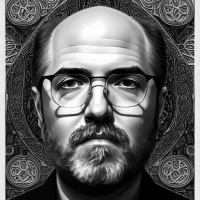
- Share on Facebook (opens in a new tab)
- Share on Twitter (opens in a new tab)
- Share on Linkedin (opens in a new tab)
- Share on email (opens in a new tab)
This article contains MAJOR spoilers for the Agents of SHIELD season 6 finale.
As we mentioned in our review of the Agents of SHIELD season 6 finale , the strength of the episode was not necessarily in its defeat of the shrike scourge but rather in its surprising, enigmatic setup for the final season next summer. In essence, the narrative arc ended when Yoyo avoided death and May took her last breath, and the epilogue began when Simmons assured us and the rest of her team that May would be perfectly fine. So what accounts for the sudden pivot for a portion of the SHIELD team, and what can we take with us to speculate on during the hiatus?
The first surprise was that Simmons was so calm but prepared in her rescue of the team so quickly after they killed both Izel and the thing inside Sarge, almost as though the soldiers were setting up the floodlights in silence while the battle was going on, and perhaps they were! Jemma makes it clear fairly early on that they “had time,” indicating that she, Fitz, and Enoch have been with the survivors of the Lighthouse assault for quite awhile, likely spending months or years at some other point in history knowing full well they could return to the present only moments after they left to pull out their remaining team members after they had eliminated the threat.
So why is Simmons so confident that May will be okay? Is there some sort of advanced medical equipment that they acquired during their time away that can repair the fatal damage May incurred? There’s an obvious parallel between the cryochamber that May is placed in and the one that Fitz used to sleep his way into the future in season 5, but Simmons actually says, “We’ll repair her tissue in a few hours when she reaches the correct core temperature,” which certainly seems beyond SHIELD’s normal capabilities. Of course, we’re infinitely thankful that the Cavalry will live on!
Ad – content continues below
Perhaps a trip to the future or assistance from Enoch’s knowledge of Chronicom tech is at play — there are upgrades everywhere in Zephyr One. Aside from the anomalous motorcycles in the vehicle bay, we also get a glimpse of a large Remorath jump drive, which has perhaps been modified to accept the core sample that was taken from the time monolith (see below). This would explain how the ship was able to teleport not only in space, but in time as well, although the question remains how Fitz and Simmons were able to initially solve the time travel problem that took them a lifetime to figure out last season. Nevertheless, even the self-launching mechanism and the autopilot function of the Z1 seem to be on the order of futuristic artificial intelligence.

Simmons specifically mentioned Chronicom-level technology being used to modify the Coulson LMD that serves as the biggest shock of the finale. Presumably the brain scans from the Framework that Simmons and Fitz were preparing to sacrifice themselves to prevent the Hunters from acquiring were used to re-create Coulson’s memories, but if this new version of Phil has been upgraded as much as suggested, the LMD could be virtually indistinguishable from the real thing, including to himself. It’s interesting to note that Simmons suggests that the Coulson LMD will be Director Mackenzie’s right hand man, not his replacement.
But why do the Chronicoms want Earth specifically to be Chronica-3? Aren’t there plenty of empty planets out there to choose from, especially for a machine race that could likely survive in a variety of atmospheric conditions? It seems like a lot of trouble to, as Jemma puts it, “destroy SHIELD and everyone within it” to eliminate the only threat to Malachi’s plan, but maybe he discovered something in Fury’s Toolbox that is especially tempting for him to advance his race and its mission of recovery, something important in SHIELD’s history contained within.
In fact, much is made of Coulson being needed as an expert on SHIELD history, which makes it likely that the time period in the past that the Zephyr One travels to is no coincidence. Simmons’ reference to the Empire State Building as the tallest building in the world and its appearance as being in the final stages of construction (see below) puts the year at 1931. That means, as Daisy suggests, it would be illegal to have a drink since there are still two more years until prohibition laws are repealed. But Peggy Carter is only about ten years old, and the SSR which preceded SHIELD won’t be around until after World War II. So either the relevant history is much earlier than we know, or season 7 may visit multiple eras in the past.

Those who pay attention to leaks on social media will know that Ming-Na Wen briefly had a picture in her Instagram story that lends credence to the Agent Carter connection, which would certainly be very exciting, and the visit to the past in the Agents of SHIELD season 6 finale fits right in with that theory. All that’s left to wonder is where Fitz is (or Flint for that matter) and why it’s strategically important in resisting the Chronicom Hunters for Simmons not to know where he is. Let the speculation begin as the long wait until season 7, likely in the summer of 2020, kicks off with a major, but welcome, paradigm shift for the show!
Michael Ahr is a writer, reviewer, and podcaster here at Den of Geek; you can check out his work here or follow him on Twitter ( @mikescifi ). He co-hosts our Sci Fi Fidelity podcast and coordinates interviews for The Fourth Wall podcast .

Michael Ahr | @mikescifi
Michael Ahr is a writer and multimedia producer at Den of Geek with a focus on science fiction television. Elsewhere, he teaches video production to high…
By providing your information, you agree to our Terms of Use and our Privacy Policy . We use vendors that may also process your information to help provide our services. This site is protected by reCAPTCHA Enterprise and the Google Privacy Policy and Terms of Service apply.
Agents of S.H.I.E.L.D. EPs Break Down Those Trippy Season-Ending Twists, How Final Season Will Tap Into History
Matt webb mitovich, chief content officer.
- Share on Facebook
- Show more sharing options
- Share to Flipboard
- Share on LinkedIn
- Submit to Reddit
- Post to Tumblr
- Share on WhatsApp
- Print This Page
With the closing moments of its two-hour Season 6 finale, Marvel’s Agents of S.H.I.E.L.D. set the stage for a quite different-looking farewell run, while also revealing how a dispatched-with familiar face will somehow stick around. TVLine spoke with the showrunners about what those two bombshells mean for the past… er, future?
But first, to “succinctly” recap the two-hour finale:
While Izel inhabited Flint (who had been summoned from Mack and Yo-Yo’s minds) and used his power to reconstruct the three monoliths, Deke and his grandparents distributed possession-proof slap bracelets as well as shrike-killing bullets to the team. And just in time, because with the monoliths in place, Izel commanded the shrike to “bring me an army.” Sensing that Izel can hear their communications, the SHIELD team went dark, but the question became: How do they get past her to save Mack and Yo-Yo? Deke sheepishly approached Nana and Bobo with a possible solution, in the form of a portable jump drive that he built off (of course) stolen tech — though it will need some tweaking, seeing as most of the test mice died! The family that fine-tunes tech together alas doesn’t stay together. A quarrel between FItz and Deke leads the latter to wonder what he has to do to get any respect, after which he straps on the device and “jumps” away, landing inside the temple. With Izel busy “singing,” Deke slaps bracelets onto Mack, Yo-Yo and an injured Flint. Mack and Yo-Yo then carry Flint to Zephyr One, while Deke struggles to “jump” away, hampered by an unexpected recharge period.
May meanwhile had been hoping that after unleashing his power to vanquish Izel, Sarge could retain the bit of Coulson inside him, to stay behind with the team. Sarge, though, coldly counseled her to abandon any hope of getting the love of her life back in some form. Breaching the temple just as the monoliths vibrate into fluid and “wash” open the gateway to Izel’s world, Sarge chokes, hoists up and throws down the lady demon. And yet he can’t bring himself to slay her with the special sword. Sarge explains to May that he feels a pain in his heart, which she suggests is love. “I was afraid of it, too, but you let me feel it,” she tells Faux Coulson. “You gave that gift to me.” When May urges Sarge to “remember” her, he acknowledges that yes, the pain he feels probably IS love — “and I know how to end it,” by slicing it out of him! He then runs through May with the sword, then lobs her and it into the gateway!
Elsewhere at the close of Hour 1, Enoch gets a visit from Isaiah, who has bad news to share — all other Chronicoms, himself included, have been reassigned — from anthropologists to hunters !
The second half of the finale thus found S.H.I.E.L.D. fending off multiple threats — hordes of shrike “zombies” as well as Chronicom hunters — on multiple fronts. Swarmed by the former after making his way to the Quinnjet, Deke needed Mack to guide him over the radio on how to fly the jet and then (not-so-gently) dock it on the Zephyr. Yo-Yo, meanwhile, used a new (Flashtime?) skill to gun down three zombies in slow motion, but then was blindsided by a shrike that flew into her mouth.
Elsewhere, FitzSimmons realized that the hunters know their every move because they had accessed their minds via the Chronicom tech. After sending others to the one place they only recently learned of — Deke’s secret workshop — they hid out where the last Framework tech was kep, and rigged the place with explosives. Realizing that with no remote detonation, they knew they’d have to sacrifice their lives in the name of blowing up a bunch of baddies/the greater good, but as they prepare to do so, the hunters get blasted away by… Isaiah?… who is actually Enoch wearing a “skin.” Enoch tells his friends that he has another bold plan, one that will demand “the hardest thing you’ve ever done” and “change the natural course of your lives forever.” That is all.

Jemma then drops the biggest bombshell, explaining that with the Chronicom hunters in possession of, among other resources, Fury’s “black box,” they needed someone who truly knows S.H.I.E.L.D. So, through a merging of Chronicom tech and archival data, they have created sort of “the ultimate LMD” — in the form of a suit-and-tie wearing Coulson! “Hey, guys…,” he smiles upon being booted up. And off we go to the seventh and final season!

TVLINE | Which was the trickier “Coulson” to resurrect? The way you brought Clark Gregg back for Season 6, or the way you found to keep him around for season 7? JED WHEDON | You mean, the one that was created through a strange occurrence on another planet with three monoliths that created him through time and space, and with only the memories of a distant fog of his friends… or the one who was a robot? Yes, the robot was easier. JEFF BELL | After the emotional end of Season 5, we didn’t feel like we could reboot him immediately as LMD Coulson. That’d be a terrible cheat. So we had a season of Sarge, whom we really enjoyed, and which also reminded us how much we love Coulson. When we had this new “Coulson 2.0,” I think we all went “Yea!” inside. We’re also curious about how he’s different from the Coulson we knew before.
TVLINE | How hard was it to come up with Sarge? Because his origin was a little messy, a little complicated. Did you have to ask yourself, “At what point in our past might Coulson have duplicated himself?” WHEDON | We had to find a way to make it work, to create a new version of him— BELL | So we MacGyver’d him together. We went through the house and we Mythbuster’d him, using the pieces we had in the garage.
TVLINE | Did you have the luxury of breaking both Season 6 and 7 at the same time? I know Season 6 came as a surprise…. BELL | [We learned about Season 7] about halfway through Season 6. WHEDON | We did know we had a 7 when we were ending 6, and that allowed us to do that cliffhanger.
TVLINE | So at the point in Season 6 when it’s established that Izel destroyed the Chronicoms’ home world, you weren’t necessarily planting the seed for Season 7. MAURISSA TANCHAROEN | Perhaps at that point we did…. There’s a point in time when we did know. BELL | Because we write scripts ahead, we’re ahead of production, so a lot of times we’ll go, “Oh, that’s what this meant in 610.” If we’re four scripts ahead, we can always throw a line in and sharpen a point.
TVLINE | Talk about the decision to add some flair to Daisy and Yo-Yo’s powers this season. WHEDON | One of the things that’s hard about people with powers is you can’t always have theme using them, or the story would be over right away, so we’re always finding ways to limit them or change it up. That’s the puzzle, to keep it interesting and new.
TVLINE | Turning to the final act of the finale: When Jemma says, “I can’t know” [where Fitz is], that is because of the fact that the Chronicom hunters know their minds? TANCHAROEN | That’s very astute!

TVLINE | You sent the team to what I am guesstimating is the year 1930, 1931…? TANCHAROEN | That’s a good guess….
TVLINE | Why bring us to the 1930s versus the ’40s? Because doesn’t that well predate the creation of S.H.I.E.L.D.? WHEDON | That’s a good question. BELL | An excellent Season 7 question. WHEDON | Also, there’s the cool hats. TANCHAROEN | We like the clothes, we like the cars…. WHEDON | The bootleggers….
TVLINE | Before I did the math, my first, excited thought was that they could cross paths with Agent Peggy Carter. But when realized it’s a decade too soon…. Maybe they could run into a teenage Peggy or something? WHEDON | We wish you were in the writers room, so we could have done that!
TVLINE | What do you want to say about the mission for Season 7, led by Jemma in her sleek topknot? WHEDON | It’s to preserve the history that we’ve grown to know and love on our show. It’s a way for us to look back at everything we’ve done and talk about the history of S.H.I.E.L.D. as we bring the show to its final chapter.
TVLINE | Is that by design, to bring things full circle in a way? WHEDON | That is thematically right on the button, sir.
TVLINE | Will the Chronicom threat be given a specific new face, or is it someone we already met? WHEDON | It will receive a new face, yes.
TVLINE | You just wrapped filming the final season. Is there any chance for one final MCU nod on your way out the door? WHEDON | There will be one tiny little MCU nod. TANCHAROEN | “Tiny”…? OK…. WHEDON | Just a nod! Just a nod.
Cancel reply
62 comments.
Email * Your email address will not be published. We will notify you when someone replies.
Holy cow – I need 2 more hours just to digest what I saw the past 2 hours!!!
Wow, I was so not ready for May to die, but I’m glad she was saved.
I KNEW they couldn’t kill off the heart of the show, and May’s apparent demise just had to be part of a plan! So glad to see it sort of was, and that BOTH May and YoYo will live to be in the final season. But Coulbot was kind of a surprise at the end there. I assume that will mean we see a more logical and less gut-instinct Phil in the upcoming season, which is kind of fitting if they’ll be battling a not quite bot population. At least these Artificial Beings don’t have double-barreled heads that can detach and fly. – Glad to see Izel dispatched, but the whole Sarge storyline was kind of a let down in the end. What happened to Snow? And to Piper and Flint? If Izel created Flint (or her powers did,) did he dust like the Izel-conjured Shrike did when she bit the dust? – LOVED the whole “nobody likes me” with Deke. He did kind of redeem himself in the end there, I think. Nice to see him useful. Maybe he’s with Fitz now, trying to build that relationship. – Great 2 hours. Can’t believe we have to wait a whole year to see the rest. Still hoping for a May and Yoyo or Quake based spin-off on Disney+.
Izel didn’t create Flint. The powers of the monoliths did. Maybe the Creation one? Because Mack & Yo-yo were talking about how they had already faced their fears.
Didn’t Daisy have Snowflake locked up? She’s likely still in the Lighthouse. Of course, she could have been killed when the Lighthouse was invaded. Or maybe she joined the invaders? Yeah. Her storyline needs resolution.
The Creation Monolith made Flint from YoYo and Mack’s memories.
My guess is that Piper, Flint and Deke are all with Fitz, somewhere else (and we’ll get that perspective too). I hope they manage to bring Snow back in season 7, though. If she’s just dead and that’s that, it would be a shame. And I was a little bummed by the end of the Sarge plot too – I had always maintained we’d get our Coulson back by season end; and I think if it had been cancelled after season 6, they might well have done exactly that. But it’s hard to see how they could pull off that plot from here. – This time travel approach enables them to entirely avoid ‘the snap’ – but I’m still a bit bummed that they seem to have gone off into another multiverse in season 5, and it’s never tied back in. Looking forward to this season 7 – feels a little like it’s gone full Fringe.
Are they going to follow the time travel “rules” from End Game. If so whatever they do in the past is not going to effect the people in the present (multi-verse).
I’m amped for the final season… Tho I’d like to know what happens with flint and snowflake… I hope they both show up… Especially flint… As for the final season… Man should be interesting to see how this particular team deals with 1930s America… A very large proud black man who has a white man as his number 2 ( with Simmons amd Deke somewhere lower down the totem pole) two Asian women and a latina…. Oh joy can’t wait… That’s not sarcasm by the way… I mean it
marvel studios completely ignored the issue of race relations when introducing 1945 steve rogers to his 2012 large black boss nick fury. i wouldn’t be surprised to see the same thing here.
That was a lot. I need a rewatch.
Dont know the Chronicoms only know Fitz and Simmons minds up to the point that they were in that mind prison? I thought the whole reason they went to hide in Deke’s lab was because it was created after that so the Chronicoms wouldnt know about it.
EVeryone else did, Simmons said they couldn’t go there because they’d be a liability.
Wow, I was also hoping it was the mid to late 40s so they could have brought in Haley Atwell as Peggy Carter. That would be a missed opportunity unless they time jump to the post WWII 40s or 50s.
I was also hoping this, but I was also *also* hoping that it would be Carter and a reunited, post-snap Cap. (Yeah, I know, fat chance of getting Chris Evans)
Peggy Carter would have been tricky to do without bringing in Steve Rogers in some way. Given the timeline I suspect they’ll be dealing with the creation of SHIELD.
Also, what happened to Deke? Did I miss something?
He shot the Shrike zombies outside while the others were fighting Izel and Sarge, he got on Simmons plane with the rest.
Thanks, because in all that action, I missed that.
Peggy Carter was the first thing I thought of …
You can’t tell me that none of the writers thought of using her when that’s the first place so many of the fan’s minds go to. I wouldn’t be surprised to see her at some point (maybe they’re keeping it hush-hush?) in the final season, but we’ll have to see what they’re able to fit in with their budget constraints.
If they’ve travelled to 1931, then Peggy is only 10 years old.
I have a feeling they are in the 30’s just for awhile and will jump to the 40’s and possibly have a Haley Atwell (Peggy Carter) cameo. I’d also love a Bobbi, Hunter, and Mike Peterson cameo!!
yeah because fitzsimmons was able to perfect the time drive,next season they’ll likely be jumping foward in time and pictures released as season 7 has already wrapped have hinted at a crossover
As much as I’d love to see Peggy Carter onscreen again, I don’t think she was living in America until after the war. But you know who WAS in New York in the ’30s? Steve. And Bucky. It would be awesome to see a cameo from one of them.
Cap was born in 1920, so maybe they’ll get a scrawny little street kid to help them. . Maybe that’s what they meant by a *tiny* nod to the MCU.
Exactly – imagine the looks on the team’s faces when he introduces him self as Stevie Rogers :D
Wow that was a lot, I will rewatch !! I figure May would be saved. I’m Differently up for a May and Yoyo and Quake spin-off.
Empire State Building was completed in 1931 and the outside of it looked pretty well done here. * I wished/hoped they would rejoin the MCU for season 7 since it would be after the Endgame secrets.
They just better get Fitz and Simmons back in the same place in the first episode of season 7. I am sick of spending half the season with them apart!
The constant separation of Fitz and Simmons is tiresome and reminds me of sun and Jin on Lost and that’s not a good thing
Judging by this, I’m assuming the whole season isn’t set in the 1930’s and they kind of hop throughout SHIELD’s history. Because 1930’s would get kind of boring since SHIELD doesn’t even exist yet.
Yep. Other interviews point to that.
A few quick points: . 1. *Most* of the mice died. :P . 2. Yo-Yo shot zombies, not hunters. . 3. The tech that the hunters had used to access the minds of Fitz & Simmons was their own, not Izel’s. (Back in episode 6) . 4. They weren’t hiding in Deke’s workshop, that’s where they told the others to go. They said that they were a liability and couldn’t go with them. They were going to destroy the Framework tech because it had scans of everyone’s brain who had been inside it, and they couldn’t allow them to get Coulson’s memories.
Thank you. Working on a TCA brain. (And I thought Framework tech FS found was same from Deke’s lab. Confusing.)
Sure thing. You have tons of shows and details to keep straight and I just watched it, so it was fresh. It seemed to me that Deke’s lab was fussing with Framework software to tweak it into his “game” and the one they found was the one that Aida put them into.
Its legends of tomorrow everyone,. the waiverider and the band of misfits lol..
That was my 1st thought! Sounds like a spin off of Legends Of Tomorrow (before Constantine), which I am a big fan of. Flying time machine ✔️ Traveling to significant historical points to save the world from extinction ✔️ Advanced tech to save team members from injuries ✔️ AI to explain history ✔️ Will there be costumes? Music? Bebo! 😂
There was a moment during the final hour where I really thought that most of them were going to die, and the episode would end in some kind of reset. May, Yoyo, Fitzsimmons and possibly Mack all seemed likely to be going down. – It’s kind of amazing how often Enoch saves the day, and also amazing how many different forces want to conquer the earth within a brief window given we seem to have avoided that for quite a while beforehand. – However, all in all, season 6 was satisfying if still disjointed. That the Chronicom stuff was setting up season 7 was no surprise, and right now it feels as though season 7 is going to be something special, but it did ultimately mean that Izel and Sarge got something of a short shrift. And although it was a compelling choice to have Sarge ultimately not be Coulson (and die), I think that choice will make the season less compelling and interesting on a rewatch – Sarge’s team are at their best by having their flaws be balanced out by the fact they were supposed to be the ultimate heroes. That they were following a man that ended up being a villain in the end meant that a lot of their plot line was in vain. – It was also a shame to see Agent Khan eliminated off screen and so suddenly. He was a minor character but it felt like he was being developed similarly to Piper and Davis, and with Davis already gone, it was rough to have him be a plot device to establish the severity of the Chronicom threat. – In the end, though, the two hours were fully gripping, I’m glad that we got (apparently) a full explanation and end point for the story of the three monoliths (although we still don’t know their origin). Never knowing the nature of the third one would have bothered me. I’m glad we saw the end of Izel. And I think the characters were serviced very well. – A Fringe-esque final season should be quite fun, but lets hope it has a happy ending. I, for one, don’t think I could take any ending that doesn’t involved Fitzsimmons and Mac/Yoyo riding off into the sunset together – especially after season 5 ended at such a hopeful tone. I don’t know how I’ll wait until summer 2020 for it!
Great analysis- I also was freaking out thinking both May & Yo-yo were going to die. I felt the end with Izel & Sarge dying was a bit anti-climatic, but overall that hour was intense! Poor Melinda – first Coulson dies, then Sarge arrives and she is hoping Coulson is in there somewhere. Then Sarge basically kills her (I’m still not sure why he thought he was in pain due to love…love for her? For Izel? For the family he thought he had but didn’t?). Now there is a LMD version of Coulson. Will he know he’s a LMD? Remember LMD May didn’t know she was not real for a long time. Will she fall in love with LMD Coulson? Weird. Will he “remember” his feelings for May? Omg why do we have to wait a year for the last season? Lol.
I just want to know when Fitz and Simmons are going to be together long enough to have and raise Deke’s mother.
They won’t. the circumstances that led to his mother being born aren’t going to happen he’s from a diverted reality split off from the one they are in now per the time travel rules from season 5 and endgame. For good or bad that also means that season 7 will create more branched realities than endgame did with all of the time traveling Against the Chronocons.
TIME TRAVEL ….. I knew it — I’ve been calling it since the beginning of S2 that they would end the last season with time travel !
and my guess it was ALWAYS planned this way since the inception of the show and eventually yes they’ll get to 1945 to encounter / kill the Kree ….. that eventually ends up in SHIELD’s hands and 50 years later becomes the source of GH 325
EVERYTHING on the show has been engineered to this point and explain who that Kree was and why was he on Earth in 1945
This might be my favourite AoS season finale so far. SO good.
When Simmons and the others lit up the room and began taking samples of the monoliths, I assumed they were the Chronicom hunters in disguise. Their ultimate mission was originally to find Shields method for time traveling so that they could save their home planet…which was the monolith Enoch (the Chronicom) sent them through to begin with. To me it made sense for them to take samples of the monoliths but instead they blew it up? Also the way Simmons was carrying herself in that scene seemed uncharacteristic of her.
What is Marvel thinking of ending this? I want more and more and more, please!
Awesome season. The show seemed fresh with great story lines and the finale was intense. Sad to see it will end next year.
Only problem i have with this episode Fitz and Simmons separated again.
Going to the 1930s is ingenius because that is a space in MCU history that is almost empty. It takes place before all of the movies and that way the show does not have to bother with the films events and characters – not to mention that they avoid the snap (Another season avoiding the snap would really be too much).
Not going to the 1940s was smart as well. Because if you show Peggy in the 40s you inevitably have to deal with Captain America as well – unless they are in 1946 – 1949 which however is already occupied by the two Agent Carter seasons.
In the early 30s Steve and Bucky first met and Steve lost his mother Sarah. It would be cool if young Steve and Bucky could have a cameo. You would not even need Evans and Stan for that.
Or with them exploring the shows history, HYDRA could play a very interesting role. In the early 30s they were still led by a pre-Red Skull Johann Schmidt and we could see how Schmidt transformed HYDRA from a Hive-worshipping death cult into his own private army and terror organization. This could also give us the beginning of villains like Kraken (Daniel Whitehall).
There was certainly a reason why they chose this very specific time period.
Most Popular
You may also like.

Agents of SHIELD Finale Killed a Core Character (But There's a Catch)
In the Agents of SHIELD Season 5 finale, a core character who has been on the team since Season 1 was killed, but there's more to their story.
SPOILER WARNING: This article contains major spoilers for "The End," the Season 5 finale of Agents of S.H.I.E.L.D.
Marvel's Agents of S.H.I.E.L.D. just suffered a major casualty. In "The End," the Season 5 finale, Leo Fitz was killed when a ceiling collapsed on him. Fortunately for Fitz's friends and fans alike, this may not be the end of the beloved S.H.I.E.L.D. scientist. Thanks to the season's time travel plot, a past version of him still exists in deep space.
As Graviton wreaked havoc on Chicago in his quest for gravitonium , S.H.I.E.L.D. arrived to evacuate civilians and clear the buildings impacted by the crash landing of his alien warship. Mack took Fitz and May up into one of the skyscrapers, where they discovered Robin Hinton and a breach in the ship's hull. Realizing Robin's mother Polly was still inside the ship, Mack went off to rescue her while May stayed behind with Robin.
RELATED: Agents of SHIELD's Showrunners Break Down That Deadly Season 5 Finale
At that moment, Fitz realized they were playing into the world-ending scenario they'd tried so desperately to avoid. "May, neither of them make it ," he said slowly. In an effort to prevent Mack's death, they pursued him and saved him from two Marauder soldiers . As they exited the ship and walked back into the building, though, Graviton and Daisy's fight created a tremor that caused the concrete ceiling to collapse right on top of Fitz.
Mack and May immediately dug Fitz out. Underneath the rubble, they discovered him shaken, but alive. "I hope you saved some energy, because my leg's bent. I think he's broken," he told them. "You'll have to carry me out." As they moved a large piece of concrete out of the way, they realized the damage was much worse than that. A large metal sheet had pierced through his torso.
RELATED: Marvel Reveals the Fate of Agent Coulson
At this, Mack realized Fitz was dying, so he knelt down beside his friend. "Relax, buddy. Just breathe," he said, taking his hand. "Just breathe. I'm going to stay with you. We'll find a way out of this."
In shock, Fitz told them to get Polly out of the ship, that she was in danger. May assured him she was safe. "Hey, man. You got her out! You did good, Turbo!" Mack said. "You did really good."
"Hey, Mack. I think my leg's broken," Fitz whispered. "You've been through worse," Mack replied, choking back tears. Fitz then laid his head back and passed away.
Page 2: [valnet-url-page page=2 paginated=0 text='How%20Fitz%20Could%20Return%20to%20Agents%20of%20SHIELD']
But that won't be the end of Leo Fitz. Though heartbroken, Simmons made it clear she and the rest of the team will head to deep space to find the past version of Fitz, who -- in the season's fifth episode -- went into cryosleep for 80 years to meet the rest of the team in the year 2091.
During his farewell speech , Coulson lamented the fact he wouldn't be able to say goodbye to Fitz. "But you'll tell him for me," he added with a smile. Simmons smiled back, saying, "Of course. He'll be sad he missed this little memorial -- sorry, retirement party."
"I want you to have this," Simmons said, pressing Fitz's postcard into Coulson's hands. "A picture of our new home away from home. And to remind you that your team always worked the problem, no matter what the odds."
RELATED: Somehow, Agents of SHIELD Became One of the Best Superhero Shows on TV
"Now he's frozen out in deep space somewhere, no idea he's already solved it," he explained, to which Simmons replied, "He'll be a little disoriented, but he'll be so happy to know that time is not fixed. It's a fluid, ever-changing, beautiful thing. And he didn't miss much, did he?"
"I have not a single doubt you will find him," Coulson assured her. "None of us do," she said with tears in her eyes.
Fitz's passing was further cemented by the disappearance of Deke, who was Fitz and Simmons' grandson in the 2091 timeline. Following Fitz's death, Simmons visited Deke's room in the Lighthouse, only to find it completely cleared out of all the things he had hoarded during his time in the present. This confirmed Fitz and Simmons' theory that, if they successfully changed the timeline, Deke would simply blink out of existence.
RELATED: ABC Doesn’t Have ‘Any Plans’ to End Agents of SHIELD Next Season
"We always want the audience to be feeling two things at once: to be feeling happy and sad," executive producer Jed Whedon explained to CBR . "We felt like, in writing our time travel season, which was not easy for us in the writers' room, the duplicate Fitz was a problem for us until we realized that it was an opportunity."
"We felt like it was a way to change the timeline and feel like there was a real price for it that wasn't just, 'Oh! No, we fixed it! Well, that worked out!' But it was painful and that there still had to be loss of life and our team did sacrifice, but without us losing more of our beloved characters," he added. "So we felt like it was a good pain to have, but one that you would be a little bit healed by the end."
Returning Summer 2019, Marvel’s Agents of S.H.I.E.L.D. stars Clark Gregg, Ming-Na Wen, Chloe Bennet, Henry Simmons, Ian De Caestecker, Natalia Cordova-Buckley and Elizabeth Henstridge.
- Search Please fill out this field.
- Newsletters
- Sweepstakes
Agents of S.H.I.E.L.D. season finale recap: Not quite the end
Christian Holub is a writer covering comics and other geeky pop culture. He's still mad about 'Firefly' getting canceled.
:max_bytes(150000):strip_icc():format(webp)/Screen-Shot-2019-11-20-at-11.34.46-AM-3d1cbd3dae714cac8d29a052e073d5be.png)
Now that Agents of S.H.I.E.L.D. has been renewed for a sixth season , this episode’s title comes off slightly facetious. It is not “The End” for this show or this team, but the episode does bring all of this season’s plotlines to satisfying conclusions, while also setting up some pretty important missions for next season.
We begin where we left off, with the team debating whether to use the last sample of Centipede Serum to save Coulson or defeat Talbot. Compounded with all the other divisions and debates the team has been having all season, things quickly get intense. Yo-Yo starts screaming about how no one will listen to what her future self said about sacrificing Coulson to save the world; Mack is eventually able to calm her down by talking about how the team will always cling to hope above all, and suggests they have a vote on the issue. May scuttles that option, however, by destroying the odium. Now, the only use for the Centipede Serum is to revive Coulson.
Meanwhile, Talbot is relentlessly pursuing his plan. After learning that some of the subterranean Gravitonium lies beneath Chicago, he flies his ship into the Windy City, leveling several buildings in the process. He then continues the devastation by bringing up a giant column of rock from the ground. After absorbing the small deposit of Gravitonium.
One of the reasons Daisy and others argued so hard to save Coulson was that they believed him to be the only person capable of talking Talbot down. But as Coulson informs Daisy, things have moved well beyond that stage. With Talbot hungering for more power even as he’s been driven insane by the power he already possesses, only Daisy is powerful enough to counter him. In true dying-mentor fashion, Coulson reminds Daisy that she already possesses all the tools necessary to save the world: “Find the strength in your heart to appeal to his good nature. If you can’t, find the strength in your arms to beat his ass senseless.” Daisy runs off to save the day, while Coulson collapses. This stubborn man didn’t even take the Centipede Serum; he’s just been powering this comeback through pure force of will, and a refusal to let down May and Daisy.
While Daisy goes to stop Talbot, Mack and May start evacuating people from the affected buildings. Eventually they reach one that collided directly with Talbot’s ship, and find a distraught Robin Hinton inside. Her mother Polly is still trapped onboard the ship, so Mack goes to get her out. But when Fitz arrives shortly after, he reminds May that neither Mack nor Polly lived to see the Lighthouse future. If time is indeed as fixed as Fitz always says, then they might very well die in there. ( Recap continues on next page )
Mack makes his way through Talbot’s ship, and eventually finds Polly. Unfortunately, as soon as he gets her out of her cell, two Remorath assassins show up. Having thrown away his axe-bayonet gun just seconds before, Mack doesn’t stand a chance…so thank god May is there to kick some alien ass and save her friends.
Talbot is still looking for more Gravitonium, but the search is interrupted when Daisy hits him with a flying tackle. Per Coulson’s advice, she tries the conciliatory approach first, telling Talbot that they all need to join forces in order to save the world. Talbot responds that he needs to arm himself to defeat his enemies, at which point Daisy points out that he’s not looking too different from Thanos, what with the endangering innocent lives in order to find some mysterious sci-fi weapon (well, okay, Thanos and the events of Infinity War don’t get any overt shout-outs this episode, but the context is clearly there). This exchange reminded me of a similar one between T’Challa and Killmonger at the climax of Black Panther , one of my favorite sequences from that film.
Talbot’s gravity powers are strong, and it looks like he might indeed be powerful enough both to beat Daisy and cause that worldwide cataclysm that sends humanity to the Lighthouse — especially when he starts trying to absorb Daisy into his own body via the Gravitonium, so he can use her powers to crack the Earth open. But then Daisy herself takes the Centipede Serum, giving herself enough of a power-up to blast Talbot into the sky — so far into the sky, in fact, that he keeps going into space, where he freezes and asphyxiates to death.
Unfortunately, that’s not the only death this episode. The epic clash between Talbot and Daisy causes tremors throughout nearby buildings — including the one Fitz and friends are in. Just as Mack and May return with Polly, a tremor hits and Fitz gets caught under falling debris. Mack and May succeed in unearthing him from the rubble, and for a second it seems like everything will be fine — that is, until they see the gigantic piece of shrapnel stuck in Fitz’s abdomen, and hear him saying he can’t feel his abdomen. Mack promises to stay with him, and then FITZ DIES. No, really! This is the worst possible outcome! The look on Simmons’ face when Mack arrives to give the news will haunt my nightmares forever. ( Recap continues on next page )
The show follows this up with a cruel bait-and-switch. We see the S.H.I.E.L.D. team gathering for a memorial service, and carving a black memorial plaque to hang in the plane. At this point I was in shock, refusing to believe Fitz had died when he had so much great character development this season and his relationship with Simmons is such an integral emotional anchor for the show. It was soon revealed, however, that the plaque and service were both for Coulson. With no more Centipede Serum, the team leader only has a limited amount of time left. He decides to spend it with May in Tahiti (where else?), while the rest of the team carries on his legacy and takes a spaceship out to go find Fitz.
Because that’s just it, isn’t it! If you remember, Fitz didn’t time travel to the Lighthouse future via monolith like the rest of his friends. Instead, Enoch put him in suspended animation for centuries. So that living, breathing Fitz is still out there in suspended animation, waiting for a future that has now been averted. All they have to do is find him and wake him up, and maybe catch him up on some of the things that have happened while he’s been under — like, say, his marriage to Simmons! Simmons, for one, will be delighted to inform him that time is not fixed in place after all, but rather “a fluid, ever-changing, beautiful thing.”
On top of that, the team should be grateful they made it out of this season without too much Infinity War overlap. I was honestly worried for a second that we might see half the cast turn to dust at the end of this episode, but it sounds like they have plenty of problems to worry about already.
With Coulson on a mortal time limit, I wonder what Agents of S.H.I.E.L.D. season 6: The Search for Fitz might look like. I really admired this season’s willingness to change up the formula, especially with the bonkers sci-fi storytelling of the Lighthouse arc. Not everything in that sequence worked, but I liked that the filmmakers and cast were so willing to depart from the show’s status quo and do something different. In the more recent batch of episodes, they took the exact opposite approach with multiple callbacks to the show’s first two seasons, and I liked how many lingering story lines they were able to wrap up. This season had such a book-end feeling to it, in fact, that it felt like it really could be the last. Calling this finale “The End” seems like it occurred to the showrunners , too. But I think we’re all happy to spend more time with these agents.
Related Articles
- Movies & TV
- Big on the Internet
- About Us & Contact
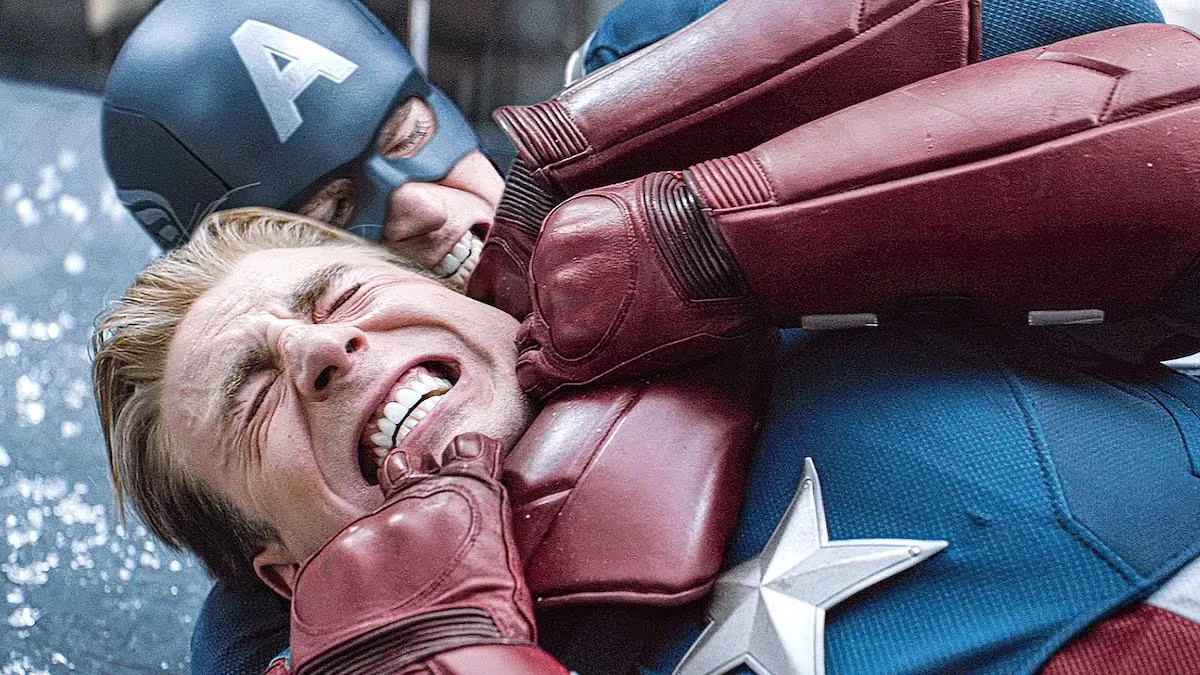
Time Travel in the MCU, Explained
Comic books and their movie/TV show adaptations are no strangers to time-travel and over fourteen years (more if you count the Rami Spider-man movies), the MCU has shown many different versions of it. Here’s every version of time-travel in the MCU explained.
Spoilers for the most recent episodes of Ms. Marvel .
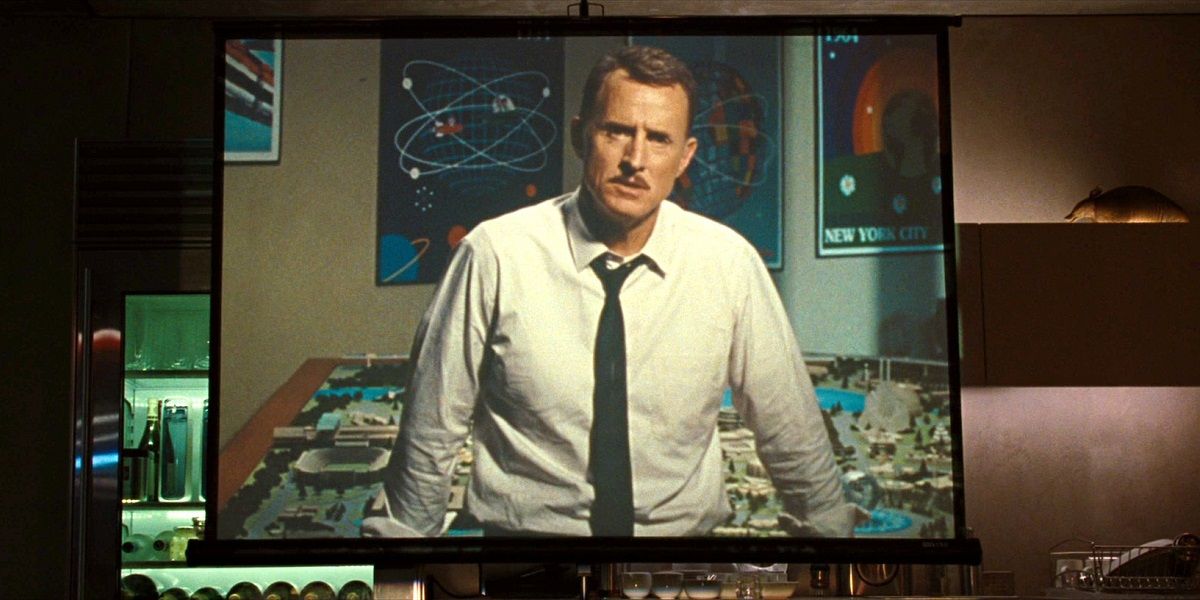
Not exactly ‘time travel’ but Howard Stark creates a model of a yet-to-be-discovered element and leaves it with a message for Tony, in the hope that Tony will be able to finish his work. However, this message did explore how the past affects the present and shapes the future.
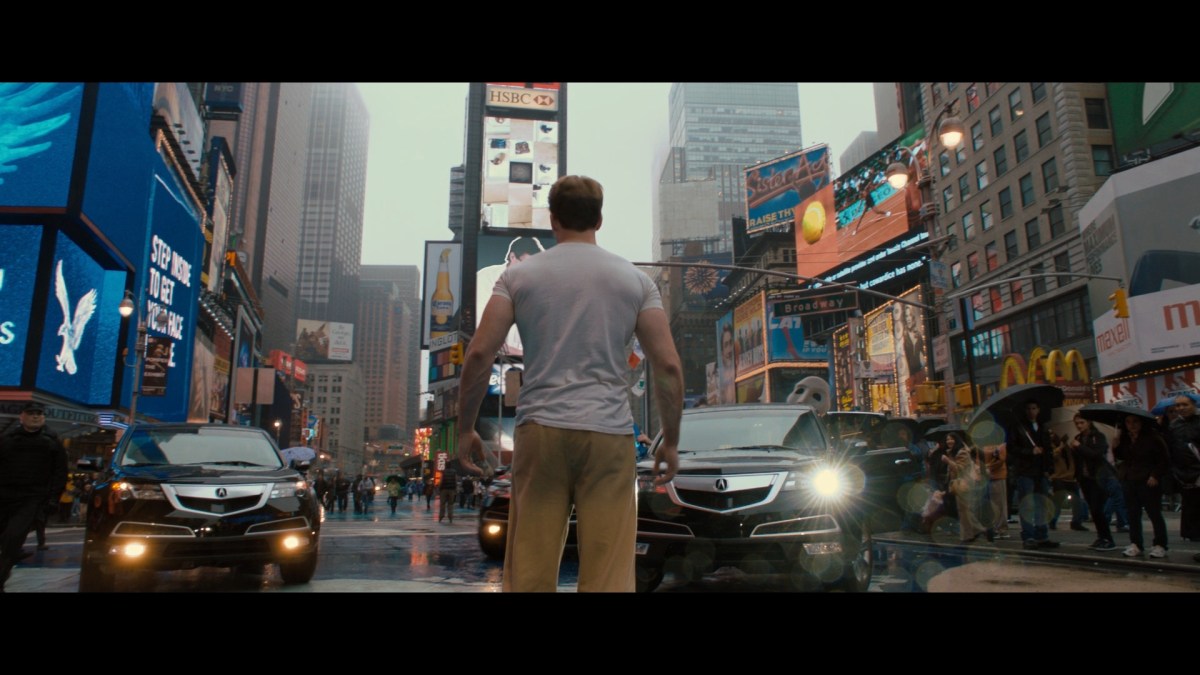
Captain America
Again, a weird form of ‘time travel’ but still counts. Steve Rogers, after crashing the Red Skull’s plane in the Arctic, gets frozen for almost seventy years and does not age in all that time. Obviously, it’s only time travel in one direction, but it still counts, as Steve effectively falls asleep in 1945 and wakes up in 2012.
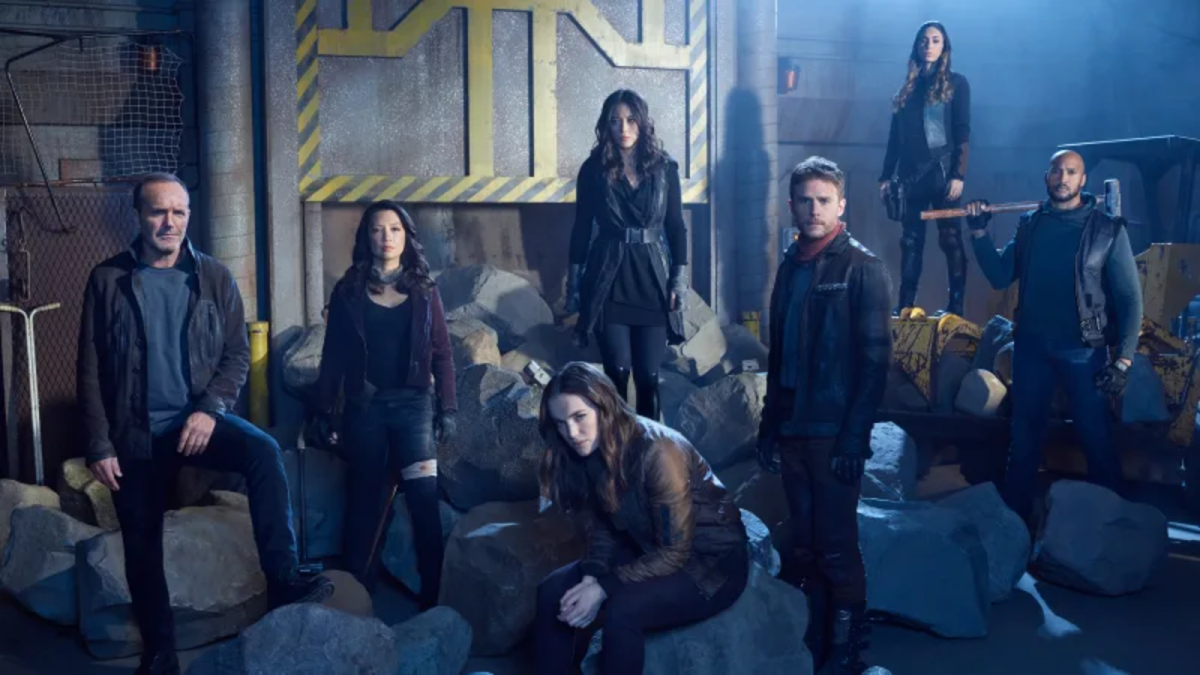
Agents of S.H.I.E.L.D.
The first time we get into the complications of time travel is in Season 3 Episode 15 where Skye/Daisy gets visions of the future. She wants to change the future, but Fitz describes time as being fixed and our perception of it only gives the illusion of the future being on a linear, changeable path.
Skip a couple seasons and we get to full on time travel into both the future and the past, where time travel is explained as a stream which can be blocked and changed if enough ‘sticks’ are thrown in but for the most part, individual sticks will not change the stream. Instead of branch universes, it focuses more on paradoxes and changing the future by going to the past.
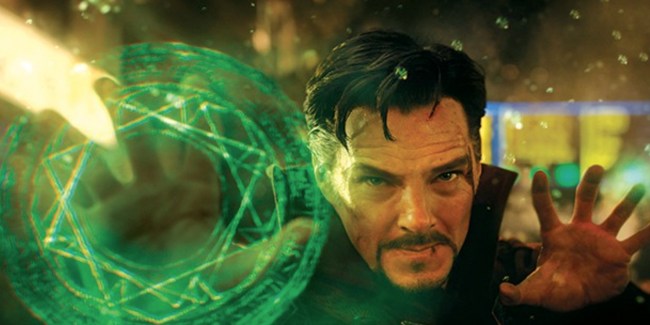
Doctor Strange
The Ancient One, being the keeper of the Time Stone, is implied to have knowledge of all time up to her death in 2017 and the Time Stone itself seems to function on a “fixed timeline;” a partially eaten apple will become more eaten overtime, indicating that Strange will finish the apple and not throw it out.
Doctor Strange ultimately uses it to trap both himself and Dormammu in a time loop and eventually bargains with Dormammu to undo the damage he had done and therefore rewind time.
Ant-Man and The Wasp
“And don’t get caught in a Time Vortex, we won’t be able to save you.”
Those immortal words set up the time-travel used in Endgame. The movie itself seems to not deal with much time travel, with Janet Van Dyne having aged at the same rate as her husband despite having spent half her life in the Quantum Realm.
Avengers: Endgame
This of course was the game changing use of Time Travel in the MCU, allowing heroes to revisit their greatest moments.
The way Professor Hulk explains it is in line with the stream theory of Agents of SHIELD except it rejects the possibility of paradoxes from the start as that would just make new branches in the timeline. The fact that Tony also bases his time GPS on a mobius strip also indicates that it’s a closed loop.
Of course, there are some questions about that: we know Loki escaping with the Tesseract created a new timeline, but Steve Rogers going back to marry Peggy Carter doesn’t? (The Russo Brothers’ insistence that Steve was always Peggy’s husband feels like a retcon.) Is the timeline without Gamora and Nebula doomed to never have the Guardians of the Galaxy?
The Snap/the Blip could also be considered a form of time travel as everyone who blipped suddenly found themselves five years in the future with no memory of being dead, as shown in WandaVision.
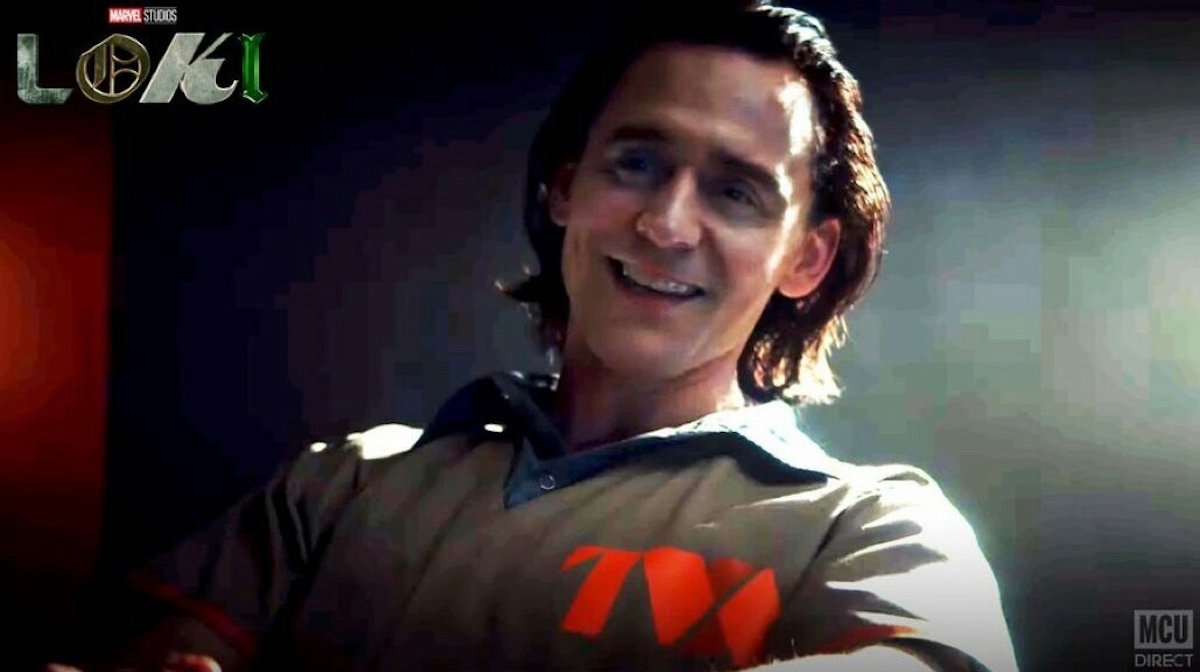
The Time-Variance Authority obviously spends a lot of their work time-traveling across both time and space, backwards and forwards. They also apparently send all trimmed branches of the timeline to the end of all time, indicating there is an endpoint.
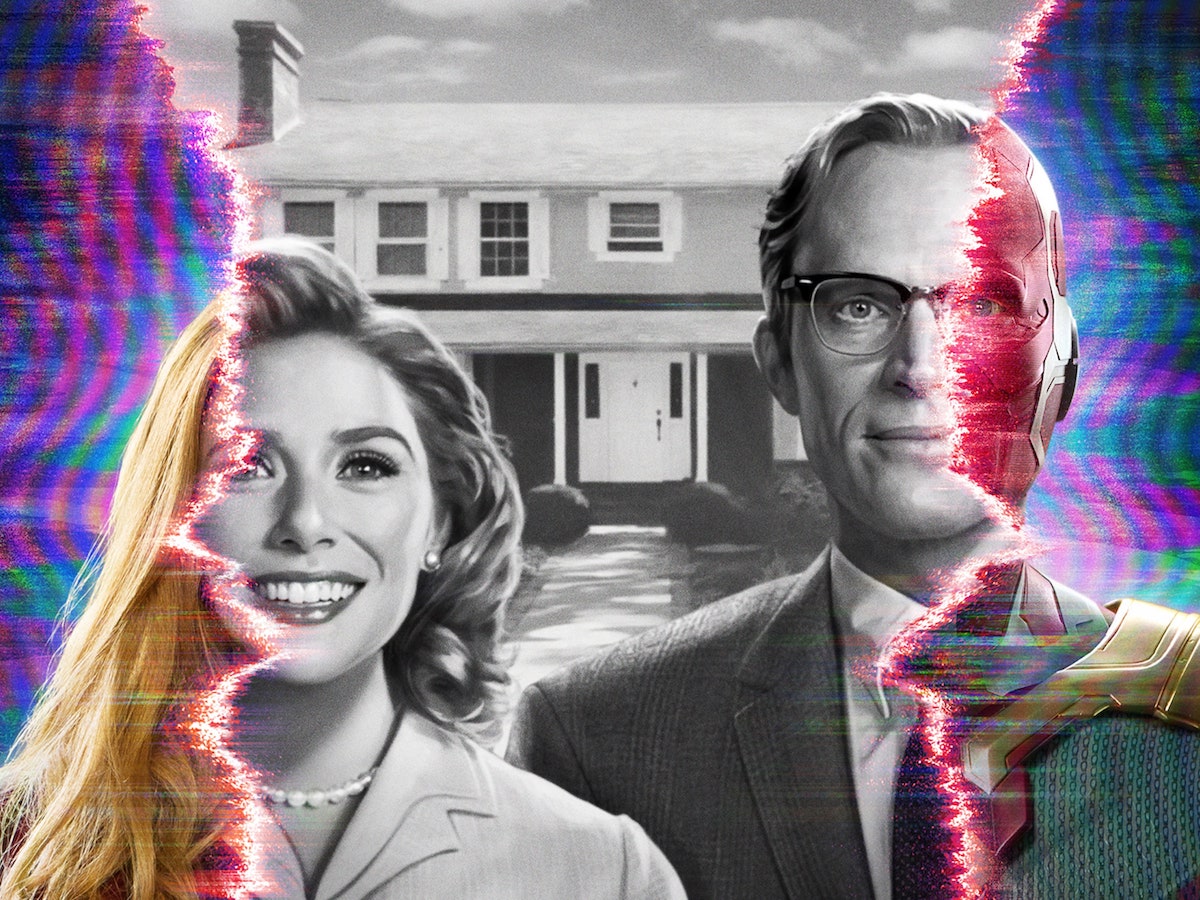
WandaVision
Again, not exactly time travel as much as the creation of an alternate world, but Wanda’s Westview Hex is in some ways a time-travel bubble, taking all who cross through back to a sitcom version of the time period, though by the end of the show it seems to have caught up with modern sitcoms, leaving the nostalgia of the false past behind.
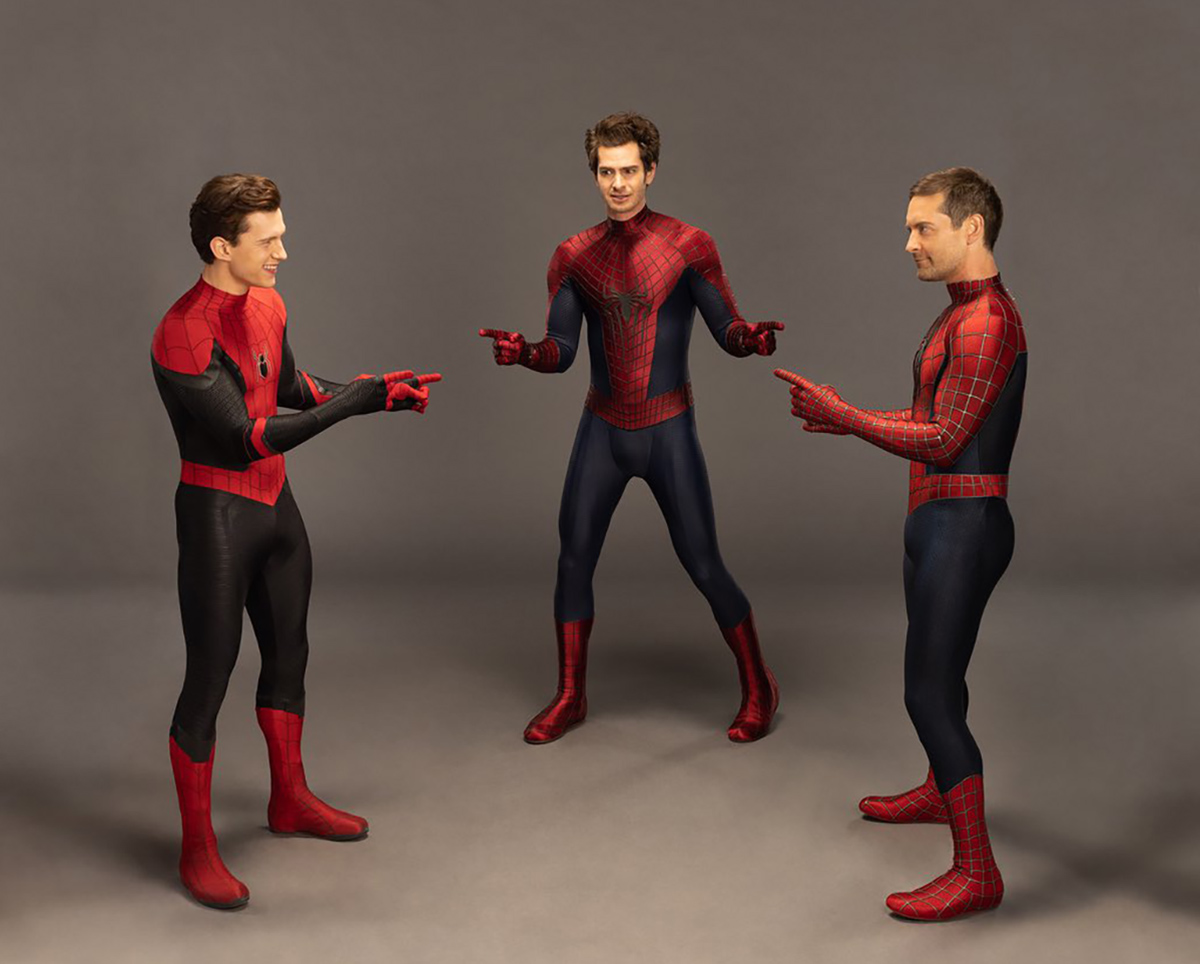
Spider-man: No Way Home
Again, a variation, but considering most of the villains in No Way Home were plucked from separate points in their Spider-men’s timelines, it certainly feels like it counts.
Of course, that begs the question, now that Peter has returned these ‘cured’ villains to their own points in the timeline, will that change his other Spider-men’s timelines? Does Norman Osborn being cured fix Harry and Peter’s friendship? Does Doctor Octavius being redeemed early change his sacrifice? Does Electro being talked down mean Gwen Stacy survives?
Maybe Sony will allow that to be explored in future episodes of What If?
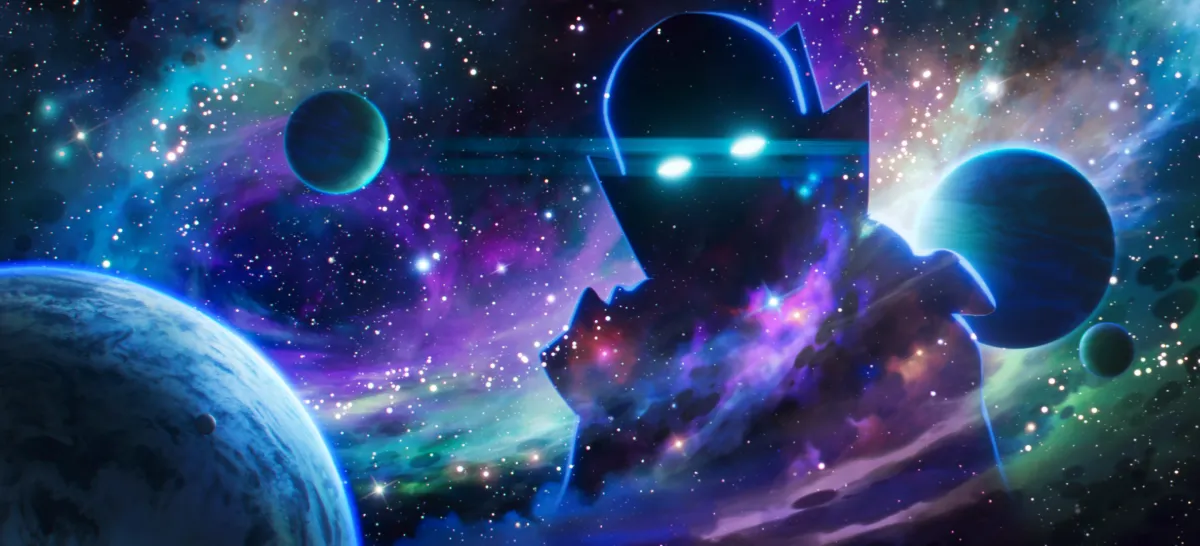
The Watcher seems to be able to see all of time and space in every universe, giving him a kind of universal knowledge that works with the fixed timeline theory. At the same time, he is occasionally taken by surprise, almost making it seem like every universe is a book he is in the process of reading; sometimes you can see the inevitable coming that the characters can’t, sometimes you yourself are taken by surprise.
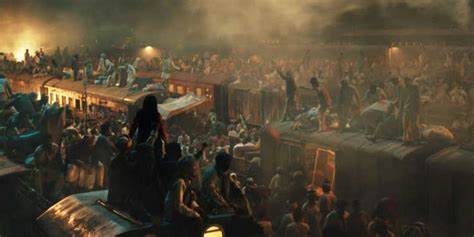
The most recent episode of Ms. Marvel also confirmed that Kamala wasn’t just seeing a flashback to her family leaving India during Partition, she had actually time traveled using the bangle that unlocked her powers. In fact, she was the one who helped her grandmother find her great-grandfather in-time to get them both on the last train.
How’s that for fixing the grandfather (grandmother?) paradox?
What’s your preferred method and/or explanation of time travel in the MCU?
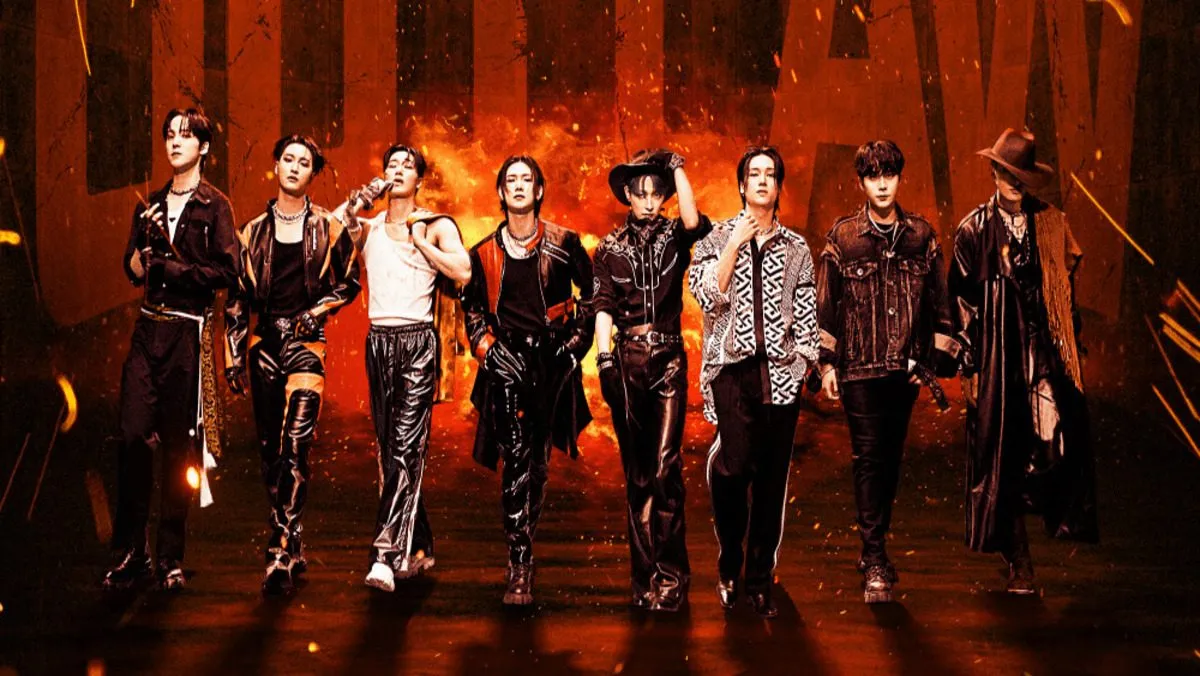
Screen Rant
Agents of shield: why fitz was missing from season 7.
Agents of SHIELD creators explain why Fitz was excluded in the final season's early episodes, explaining it had to do with a scheduling conflict.
Agents of SHIELD 's creators explain why Fitz was missing for the most part of the show's final season. As Marvel TV's inaugural project, the recent ending of the ABC series also marked the end of an era for the supposed small screen branch of the MCU. While the story further diverged from what Marvel Studios was doing on the big screen , it remained popular, with the show tackling some of the finest character arcs in the universe. With a solid team coming into season 7, fans were excited to see Phil Coulson, and his whole gang for one last mission - so it was quite disappointing that Fitz was absent for the most of it.
Like Joe and Anthony Russo's Avengers: Endgame , Agents of SHIELD 's final season utilized time travel . It premiered with the team in the middle of the Great Depression as they tried to stop the Chronicoms' attempt to keep an important ingredient of the Super Soldier serum from Dr. Abraham Erskine which would've resulted in the Super Soldier program, HYDRA, and Captain America not coming to be. The show also abided by the time travel rules stated by the Ancient One to Smart Hulk, which paved the way for the plot twist towards the end of the show - apparently, the gang was actually in a different timeline, while Fitz remained in the main universe.
Related: Agents Of SHIELD’s Future: Season 8 & MCU Possibilities
It was a nifty reveal which also let Agents of SHIELD still keep Fitz at the heart of the story without the need for his physical presence in the early episodes. This creative decision, however, wasn't something that the show creators originally wanted as they explained in a new interview with TVLine . As it turns out, they had very limited time with Iain De Castecker so they had to be smart with how they're going to use him in the story.
Jed Whedon : “Some choices aren’t made by us. So we did what we could, and we tried to make it rewarding with the pieces [we were given]. Sometimes it’s 3D chess.” Maurissa Tancharoen : “To be clear. Iain is an exceptionally talented actor and one of our dearest friends. It was just it was time for him to go [and] explore new things.”
Outside of Agents of SHIELD , De Castecker has been working on other projects including the mini-series titled Us - a BBC adaptation of David Nicholls' book of the same name, as well as, the short film Upstairs . While this resulted in his minimal appearance in the ABC/Marvel show, the series' showrunners argue that it's all for the better as it has resulted in a much more impactful pay off when they finally revealed where he was and what was actually going on in Agents of SHIELD 's last season. They also pointed out that Fitz's absence brought “Simmons and [grandson] Deke closer together.”
While Agents of SHIELD 's final season didn't have a lot of Fitz and Gemma Simmons' moments , the series made up for it by giving them their much-deserved happily after. Overall, while fans would've loved to see Fitz carrying out the mission on the ground with his team, him staying back and monitoring everything that was happening from the primary timeline ensured that he was involved throughout. Admittedly, it's also a much smarter and safer move compared to all the Avengers traveling through history via the Quantum Realm in Endgame without leaving anyone to man the HQ and make sure everything's going according to plan.
More: Agents Of SHIELD Season 7 Ending Explained (& What Happens Next)
Source: TVLine
Science | April 26, 2024 8:00 a.m.
Ten Amazing Facts About Tornadoes, Explained
To prepare you for the movie “Twisters,” we’ve compiled some jaw-dropping details about the powerful phenomenon
:focal(800x602:801x603)/https://tf-cmsv2-smithsonianmag-media.s3.amazonaws.com/filer_public/33/dc/33dc6f79-65f4-47c2-b67f-8dd30d26e647/gettyimages-937849166_web.jpg)
Catherine Duncan
Staff Contributor
As looming thunderstorm clouds spit out baseball-sized hail and torrential rain, a narrow whirlwind of air stretches its way toward the ground, signaling the arrival of one of nature’s most violent phenomena: a tornado.
Also known as twisters, these violent cyclones can reach wind speeds of 300 miles per hour and blaze a path of destruction that can last from mere seconds to several hours . While most people flee or take shelter at the sight of these alarming conditions, others dive headfirst into them. Storm chasers, people who get dangerously close to extreme weather events, sometimes for scientific research, jump at the chance to pursue the ever-unpredictable tornado.
The 1996 disaster classic Twister follows a group of these daring storm chasers, a university professor and her team of students who rush toward an outbreak of severe twisters sweeping Oklahoma. Their goal: deploy a revolutionary weather alert device, aptly named “Dorothy,” within the heart of multiple tornado systems to track and possibly tame the forces of nature. After a series of disastrous attempts to deploy their invention within multiple cyclones, a final, massive tornado rips through the area. In the nick of time, the team successfully sets up their device in the twister’s center and collects crucial data.
The highly awaited sequel Twisters sees the continuation of this research nearly two decades later, with a new generation of storm chasers and technology. The story’s hesitant protagonist Kate Cooper, played by Daisy Edgar-Jones, joins forces with adrenaline junkie Tyler Owens, played by Glen Powell, as twin twisters ravage the plains of central Oklahoma. The pair races against a rival team and devastating weather conditions to conduct groundbreaking analysis. Though the film is fictionalized, its overarching circumstances—the treacherous nature of twisters and the difficulty of predicting their arrival—ring true.

In anticipation of the July 19 release of Twisters , we contacted three scientists to unravel some of the secrets wrapped within these catastrophic cyclones. Here are a few of the coolest finds we uncovered.
Supercell thunderstorms are responsible for creating tornadoes
/https://tf-cmsv2-smithsonianmag-media.s3.amazonaws.com/filer_public/05/8b/058bb8e8-210f-4339-9aa4-83fe134be1e4/supercell_thunderstorm_over_needmore_texas_may_4_2019_web.jpg)
Tornadoes are born within supercell thunderstorms , an anvil-shaped cloud with a rotating updraft called a mesocyclone. As an extremely rare weather event, only one in thousands of storms yields a supercell thunderstorm. One in five or six supercells , though, produces a tornado.
“To get a thunderstorm, we have to have an unstable atmosphere, and generally, for a tornado, we need the thunderstorms to rotate,” says William Gallus, a meteorologist at Iowa State University. “That happens if we have wind shear, which means that the wind speed and wind directions are changing as you go up.”
Warm air rises, cold air falls, rough winds whip within the storm system, and an updraft occurs. If this rotating updraft descends toward the ground, lowering itself below the storm, a tornado can emerge from the chaos.
The tornado forms as the mesocyclone accelerates from the bottom up—and the feature intensifies its rotation, in a way similar to an ice skater who pulls her arms into her body to spin faster, says Jana Houser , a supercell thunderstorm and tornado radar analysis expert at Ohio State University.
The strongest winds of the tornado are closest the ground
/https://tf-cmsv2-smithsonianmag-media.s3.amazonaws.com/filer_public/b3/8d/b38dc04c-527b-4586-a357-66bfe4af2ca4/gettyimages-535057762_web.jpg)
In the atmosphere, the winds get stronger the higher up you go. Tornadoes reverse these conditions, with their strongest winds appearing at the lowest points. This powerful rotation starts at the ground and then floats its way upward to converge into the visible funnel cloud.
“This process happens very quickly,” says Houser, who, alongside her team and National Geographic cameras, captured the very tornadoes set to appear as background footage in the upcoming film Twisters . “In under a minute, you can go from a weak rotation to, all of a sudden, a full tornado.”
According to Gallus, computer models of tornadoes have shown that the strongest winds could lie just 15 feet above the ground—their most brutal region lining up with the height of homes and buildings.
“That’s pretty unfortunate for all of us who live on Earth, because that means that in a tornado, unlike any other weather system, the very worst winds are impacting buildings, people and trees down near the ground,” says Gallus.
Tornadoes can form anywhere, anytime
/https://tf-cmsv2-smithsonianmag-media.s3.amazonaws.com/filer_public/1f/f8/1ff86ef4-3453-48d8-9df0-a9425de1a083/tornadoalley_web.jpg)
Most tornadoes are formed in the Great Plains of the United States, in an area deemed “Tornado Alley.” Flat terrain combined with unstable conditions—warm, moist air from the Gulf of Mexico collides with dry winds drifting in from the Rocky Mountains—provides the ideal breeding ground for twisters to spawn. But tornadoes can happen almost anywhere. They have been reported in all 50 states and all continents except Antarctica, and they’ve struck major urban areas , such as Dallas, Miami and Minneapolis.
But cyclones don’t follow any sort of pattern or path, contrary to popular misconceptions. “It doesn’t matter if you’re in a downtown part of the city, in a hilly area or even a mountainous area,” says Houser. She adds that some terrain may reduce or increase the probability of tornadoes, but complete protection from the twisters can’t be guaranteed.
Similarly, while peak tornado season ranges from May to July depending on location, tornadoes can hit at any month and any time, both day and night.
Tornadoes have uniquely powerful upward motion

In most weather phenomena, the most aggressive winds blow horizontally, directing their potency outward toward the north, south, east and west, rather than upward and downward. Tornadoes defy these expectations. Things resting in the tornado’s path—the roofs of homes, cars, animals—can be suddenly whisked straight up and into the whirl of debris, victim to the sheer power of the tornado’s upward winds. According to Gallus, the strength of a tornado’s upward motion is comparable to the speed at which it moves along terrain, with 100- or 200-mile-an-hour winds shooting up toward the sky.
“That’s why the damage that a tornado does to buildings is very different than if you have the exact same mile-per-hour wind from just a thunderstorm,” says Gallus. “It’s also why you hear these stories of people or things getting picked up and seeming to levitate or fly up into the air—it’s because the tornado has such strong upward motion.”
The air pressure inside a tornado can cause just as much damage as the wind itself
/https://tf-cmsv2-smithsonianmag-media.s3.amazonaws.com/filer_public/76/8a/768a0468-e614-45f2-bfce-4fd9c9252dd6/gettyimages-545869429_web.jpg)
When visiting the site of a Missouri hospital ravaged by a tornado, Gallus recalls, a nurse he spoke with had to tilt her head a certain direction to hear. Due to the intense air pressure change caused by the tornado, her eardrum ruptured. The air pressure in the middle of a tornado can drop suddenly and strongly, as if you were riding on a plane flying up into the air extremely fast. Many people near tornadoes have reported their ears “popping” during the phenomenon. “That change in pressure is almost like nature’s way of giving you a very last warning by having your head experience this strange rapid adjustment and popping going on in your head,” says Gallus.
The change in air pressure can also create an additional force on buildings that, along with the strong winds, can intensify and quicken their destruction.
Terrain can change a tornado’s behavior
/https://tf-cmsv2-smithsonianmag-media.s3.amazonaws.com/filer_public/c0/15/c0152ae6-7858-4517-983b-82084c5eb34c/gettyimages-1321594650_web.jpg)
Researchers have a difficult time predicting when a tornado will form—and where it will go. Changing winds and differing terrain can make it hard for meteorologists chart the exact path of a twister.
“Tornadoes are incredibly susceptible to very small nuances in the land cover, in the environment, in the storm itself, and it’s very difficult, I would say impossible, to account for every single factor that could possibly go into changing what a tornado is doing,” says Houser. “They defy generalization.”
While predicating a storm is hard, meteorologists say that some features of terrain may enhance the conditions needed for a twister to form. For example, sprawling urban areas can affect thunderstorms, which, in turn, can affect tornadoes. Since cities have more precipitation on their downwind side because of the way water systems interact with urban structures, they produce more rain and more hail, and can be warmer, helping set up an environment that’s more likely for a tornado to form.
“Sometimes urban areas are warmer than rural areas due to the urban heat island. What happens if a tornado goes over a warmer city?” says Jason Naylor, an atmospheric scientist at the University of Louisville. “It looks like the urban heat island could potentially enhance the low-level updrafts in the storm and may help instigate tornadoes in a theoretical way.”
Tornadoes usually rotate counterclockwise, but they can switch directions
/https://tf-cmsv2-smithsonianmag-media.s3.amazonaws.com/filer_public/79/31/7931efbe-e744-46fb-a37a-8eb4687b8e5e/pl23_nssl0254_web.jpg)
In the Northern Hemisphere, about 98 percent of tornadoes spin counterclockwise , which meteorologists label as cyclonical. However, a clockwise-swirling tornado is not out of the question—just much less common.
The counterclockwise motion of most tornadoes has long been attributed to the Coriolis effect, the force caused by the Earth’s rotation. But, according to Houser, this is merely a myth. Tornadoes exist on “too small a space scale and time scale for the Coriolis force to affect it,” she says. Rather, the counterclockwise motion results from how vertical winds change in speed and height within the storm.
Meteorologists call clockwise tornadoes anti-cyclonic. “You get an anti-cyclonic tornado when you have a very strong surge of air within the storm,” says Houser.
Storms can produce more than one tornado at a time
/https://tf-cmsv2-smithsonianmag-media.s3.amazonaws.com/filer_public/18/b1/18b12ac6-1b65-4098-9350-f334ce1dea3b/pl23_con00002_web.jpg)
Twisters sees two groups of storm chasers unite as two different tornadoes converge over a small town in central Ohio. This event isn’t just movie magic: The same storm system can really eject multiple tornadoes at once. As winds change, the storm itself can begin to form a new tornado in a slightly different location from the original tornado—with the fledgling rotating updraft gaining power as the other twister slowly dies down. Or, if the original tornado is particularly violent , the level of agitation can churn out smaller whirlwinds that extend toward the ground.
And Houser says that other freak circumstances, such as extremely strong rotation along the edges of a storm, can also produce multiple tornadoes. A clockwise and counterclockwise tornado can even appear in the same storm system.
Tornadoes themselves can’t be forecast—only the conditions that produce them can
/https://tf-cmsv2-smithsonianmag-media.s3.amazonaws.com/filer_public/ea/d5/ead5205b-33f5-4305-b238-8714480a6bc4/may_4_0012_r_web.jpg)
The 1996 film Twister and its 2024 companion Twisters center around the same key issue: the frustrating impossibility of forecasting tornadoes. “We don’t even really try to forecast exactly when and where a tornado would hit, because we simply cannot do that ahead of time,” says Gallus.
Warnings for tornadoes are only issued when a twister is already forming and has been sighted—or indicated by weather radar—and the alerts cover an area that may be impacted.
Scientists are able to predict, however, the conditions favorable for supporting thunderstorms that spin and would be more likely to produce tornadoes. Up to a couple of hours ahead of time, when increased weather severity is detected, local television and radio news stations issue a tornado watch.
But a tornado’s intensity can’t be determined until after its wake. Scientists determine a tornado’s level of destruction by using the Enhanced Fujita Scale . The scale assesses the damage a tornado does to trees, buildings and homes. Scientists then use that information to calculate its probable wind speed. The rating system ranges from F0, the weakest cyclone, to F5, a vicious, deadly tornado, which a character in Twister deems the “finger of God.”
Climate change is affecting tornadoes

Tornado Alley is moving eastward . In the past decade, twisters have been inching their way into the Midwest and hitting states such as Missouri in record-breaking severity . Meteorologists attribute this shift to climate change.
“Now, with climate change, places that were normally too cold in the winter are finding themselves with days warm enough that you’re starting to see tornadoes at times of year, parts of the country, where they didn’t used to happen,” says Gallus.
This is caused by climate change’s impact on weather. Gallus says that climate change is making conditions warmer and more humid near the ground, which is increasing the level of instability that leads to stronger, tornado-producing storms.
According to Gallus, we may see more days that meteorologists call tornado outbreak days, where five to ten tornadoes crop up. But climate change could also decrease the frequency of days where one or two tornadoes crop up. Essentially, the number of tornadoes could be concentrated on fewer days.
“We can’t say that tornadoes are going to become stronger. We can’t say that we’re going to have less,” says Gallus. “But what we do know is, because of how the temperature is changing, we are going to start finding them in weird times of the year and places where it always used to be too cold to have a tornado.”
Get the latest Science stories in your inbox.
/https://tf-cmsv2-smithsonianmag-media.s3.amazonaws.com/accounts/headshot/Catherine_Duncan_headshot.png)
Catherine Duncan | READ MORE
Catherine Duncan is an intern with Smithsonian magazine.

IMAGES
VIDEO
COMMENTS
The time travel in season 5 of Marvel's Agents of S.H.I.E.L.D. seemed relatively straightforward: the Agents were abducted and sent 78 years into the future via a Kree Monolith, where they were prophesied to save the world. (Fitz later joined them by taking 'the long way' - cryogenically freezing himself.) This week's episode 'The Last Day' complicated matters by introducing flashbacks which ...
Agents of SHIELD's Time Travel Explained Properly Time travel is one of the most difficult concepts in any science-fiction franchise, largely because it has absolutely no real-world analogue. ... Both scientists cracked time travel, but unlike Stark, Fitz got to live on and have his Happily Ever After with his beloved Simmons and their daughter ...
Between the Chronicom defeat and the "one year later" epilogue, there's plenty of room for interpretation and speculation. Let's first take a look at how Fitz used time travel to undo the ...
Meanwhile, Fitz stayed behind in the "prime" universe, knowing he would eventually use the Quantum Realm to travel to this new reality at a very specific point, so he could take them back to ...
A newly-released clip from Agents of SHIELD season 7 has explained its time travel - and it actually helps to understand the Multiverse concept seen in Avengers: Endgame.Marvel's Agents of SHIELD is heading for its seventh and final season, and the stakes are higher than ever before. The SHIELD team appear to be engaged in a sort of 'Time War' with an alien race known as the Chronicoms, who ...
The way time travel works on Agents of S.H.I.E.L.D. is a little different — though, at some point, Bruce Banner (Mark Ruffalo) should probably debrief and compare notes with Leo Fitz (Iain De ...
Time travel did present an interesting creative opportunity to lessen the blow of Iain's absence, as not much time had passed for him during his time off-screen. We also get flashbacks to the years that Fitz and Simmons had together working on the time machine in space, raising their daughter (surprise!), and eventually finally getting their ...
The key to all this is Robin Hinton. Robin is a girl with the power to see into the future. Robin was able to see into Earth's future destruction. She then sent Enoch to capture the SHIELD team ...
Agents of S.H.I.E.L.D. bosses break down the 'bittersweet' series finale. Warning: This article contains spoilers for the series finale of Marvel's Agents of S.H.I.E.LD. After seven seasons spent ...
The creators said they wanted the finale to mirror the feelings the people working on the show were going through. "Find a way where everyone's still gets their own little happy ending, but ...
This would explain how the ship was able to teleport not only in space, but in time as well, although the question remains how Fitz and Simmons were able to initially solve the time travel problem ...
As the episode title denoted, this week's Agents of S.H.I.E.L.D. offered a "Rewind" to the fateful day when the team — save for Fitz — was abducted from the diner and transported to a ...
With the closing moments of its two-hour Season 6 finale, Marvel's Agents of S.H.I.E.L.D. set the stage for a quite different-looking farewell run, while also revealing how a dispatched-with ...
In the Season 6 finale of Agents of S.H.I.E.L.D., the Chronicoms attacked the spy organization's headquarters, the Lighthouse, in an effort to take them all out. While most of the team was away in a temple to deal with the threat of Izel and the Shrike, Fitz and Simmons were at the Lighthouse, trying to survive the onslaught of the synthetic ...
Marvel's Agents of S.H.I.E.L.D. just suffered a major casualty. In "The End," the Season 5 finale, Leo Fitz was killed when a ceiling collapsed on him. Fortunately for Fitz's friends and fans alike, this may not be the end of the beloved S.H.I.E.L.D. scientist. Thanks to the season's time travel plot, a past version of him still exists in deep ...
#AgentsofSHIELD#FitzSimmons#CoulsonLivesSeason 6, Infinity War, Phil Coulson, Melinda May, Daisy Johnson, Synopsis, Premiere, Episode 3, Leopold Fitz, Jemma ...
What Fitz says about spacetime is essentially correct, however he seems to make a leap in coming to his conclusion about how time travel works. He uses the concept of spacetime in order to justify determinism, and I'm not sure that exactly follows, nor that his conclusion is necessarily correct. First, determinism.
2017 - 2091. Season 5 began in 2017, picking up immediately at the conclusion of season 4. Enoch, a Chronicom anthropologist working with the True Believers, led a team into an LA diner to kidnap Phil Coulson, Melinda May, Daisy Johnson, Mac Mackenzie, and Yo-Yo Rodriguez, leaving Leopold Fitz behind. (This gathering at the diner is the last ...
MCU Time Travel Explained. Spoilers for large parts of the MCU. Through fiction, time travel is displayed through three forms. A fixed timeline, A dynamic timeline, and a multiverse. This image gives a quick explanation of the three forms. The MCU is unique, in that the type of time travel actually changes depending on the method used.
With Coulson on a mortal time limit, I wonder what Agents of S.H.I.E.L.D. season 6: The Search for Fitz might look like. I really admired this season's willingness to change up the formula ...
Learn more. With Captain America, Doctor Strange, Ant-Man & The Wasp, Avengers: Endgame, and Ms. Marvel, the MCU has a wealth of time-travel venues available to its heroes.
The show also abided by the time travel rules stated by the Ancient One to Smart Hulk, which paved the way for the plot twist towards the end of the show - apparently, the gang was actually in a different timeline, while Fitz remained in the main universe. Related: Agents Of SHIELD's Future: Season 8 & MCU Possibilities
Science | April 26, 2024 8:00 a.m.. Ten Amazing Facts About Tornadoes, Explained. To prepare you for the movie "Twisters," we've compiled some jaw-dropping details about the powerful phenomenon